Special Report
40 Countries the US Government Doesn't Want You to Visit

Published:
Last Updated:

When it comes to international travel, some countries are best left out of American vacation plans. Sectarian violence in the Middle East, narcotics trafficking in South America, and frequent terror attacks in the Arabian Peninsula and North Africa, have made traveling to certain countries especially risky for American citizens.
The U.S. Department of State issues travel warnings and travel alerts for dozens of countries across five continents. According to the State Department’s Travel Warning List, 24/7 Wall St. reviewed the 37 countries too dangerous for American travelers.
The State Department issues travel warnings in order to alert Americans of potential dangers and urge them to consider not traveling to certain countries at all.
Click here to see the 40 countries the government doesn’t want you to visit.
Warnings can vary dramatically in severity. For example, the State Department expressly urges Americans not to visit Yemen and has recommended Americans currently in the country to depart immediately. By contrast, Mexico has a standing travel warning due to drug trafficking violence and kidnappings for ransom, but tourist destinations in areas such as the Yucatan Peninsula are largely spared from these dangers. Mexico attracts millions of American visitors each year.
Just as the strength of a travel warning can vary from country to country, so can the type of threat. Depending on the country, American travelers face a range of dangers from civil unrest and political instability to violent crime and natural disasters. Currently, the most common reason for a travel warning is the threat of terrorism. The risk of terrorist attacks are cited in travel warnings for over half of the countries on this list, primarily in the Middle East and North Africa.
While in most cases terrorist groups, criminals, and anti-government rebel groups pose the threats, there is at least one notable exception. In North Korea, the main threat to American citizens is the government itself. Americans risk arrest, long-term sentences, and even hard-labor for infractions that are not considered criminal in the United States. Punishable offenses in the authoritarian country include taking unauthorized photographs, shopping at stores not designated for foreigners, and disrespecting the country’s current and former leaders.
The risks of traveling in these countries is certainly not limited to only Americans. Often the conditions that make such travel risky are felt on a daily basis by people actually living in these countries. Venezuela’s deeply depressed economy, which has led to violence in the country, has led to widespread suffering among Venezuelans. In Honduras, unchecked criminal activity lowers the quality of life for Hondurans more than for anyone else. In Further, in countries like North Korea and Syria, citizens face oppression and violence from their own governments.
To identify the countries the U.S. Government does not want you to travel to, 24/7 Wall St. reviewed the State Department’s list of countries with standing travel warnings as of October 3, 2016. Reasons for issuing a travel warning might include unstable government, civil war, ongoing intense crime or violence, or frequent terrorist attacks. The lower level travel alerts from the state department are issued for a tumultuous election seasons, disease outbreaks, or elevated risk of terrorist strikes. Countries with standing travel alerts were not considered. Population figures and GDP per capita figures came from the International Monetary Fund. Due to insufficient reporting, most IMF figures are estimates.
These are the countries the U.S. government doesn’t want you to visit.

1. Afghanistan
> 2015 Population: 32.0 million
> 2015 GDP per capita: $600
As with many countries in the region, terrorist attacks are the primary threats to Americans traveling in Afghanistan. Extremist groups, including ISIS and the Taliban, are active throughout the country. U.S. and coalition forces have been fighting al-Qaeda and Taliban forces in Afghanistan since 2001. Traveling to any part of the country may be unsafe due to the ongoing violence. Travelers can encounter improvised explosive devices, direct and indirect gunfire, as well as risk kidnapping and hostage taking.
[in-text-ad]

2. Algeria
> 2015 Population: 39.9 million
> 2015 GDP per capita: $4,318
While there is typically a heavy police presence in major urban centers in Algeria, cities across the country are still vulnerable to terrorist attacks. Organizations linked to ISIS and al-Qaida operate within the country, and kidnappings and terrorist bombings have occurred to the east and to the south of Algiers, the country’s capital city.
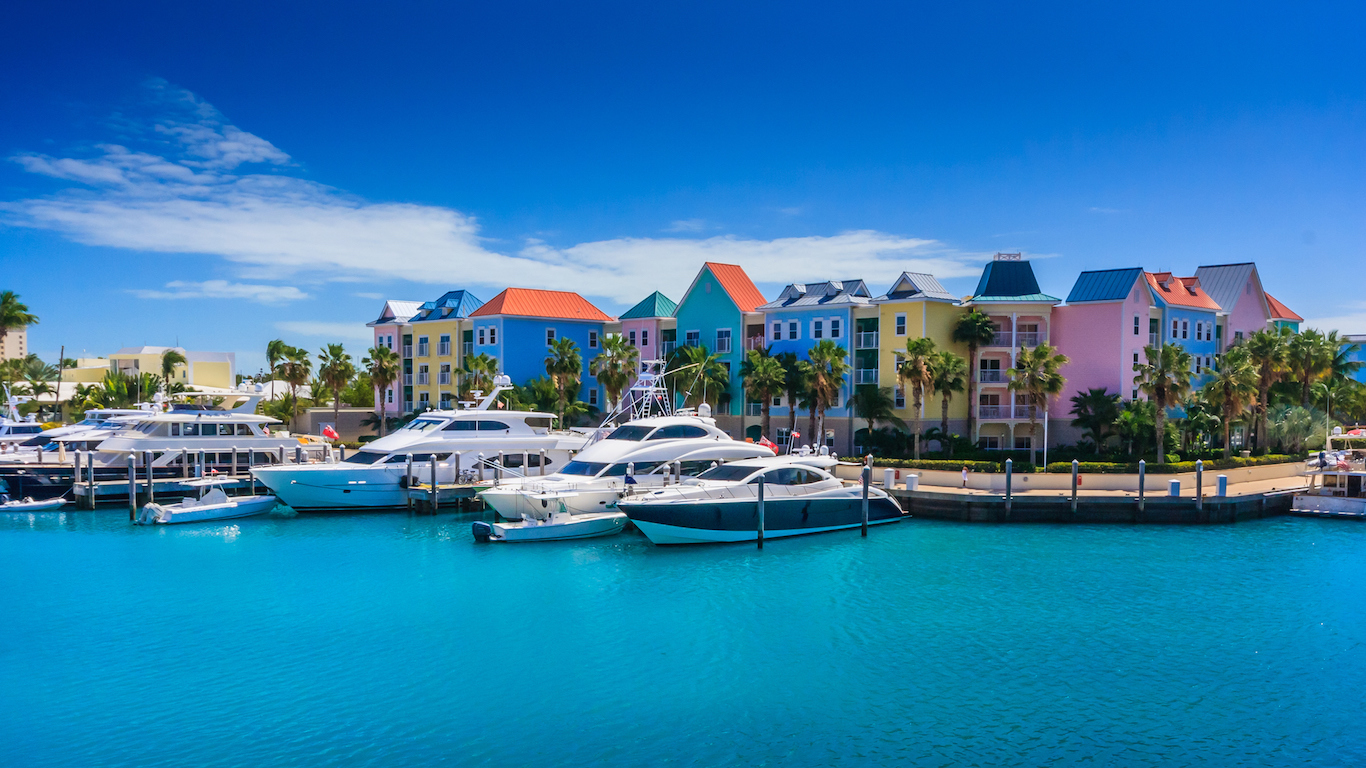
3. The Bahamas
> 2015 Population: 0.4 million
> 2015 GDP per capita: $23,903
Within 48 hours of the time of this writing, Category 4 Hurricane Matthew is expected to land in The Bahamas and a number of other nations in the region. Americans residing in the country have been advised to depart before the hurricane strikes. Some other countries at risk of hurricane damage have extremely limited medical care infrastructure, which lengthens travel warnings after serious storms. Once the hurricane passes through, the travel warning for The Bahamas, a relatively developed country, may be short by comparison, as medical facilities will likely be taxed for a shorter time than they would in a neighboring country such as Haiti.

4. Bangladesh
> 2015 Population: 159.9 million
> 2015 GDP per capita: $1,287
Following a deadly terrorist attack at a restaurant popular with foreigners in July 2016, the U.S. State Department took steps to evacuate the families of embassy workers from the country. As the terror threat in the country remains, U.S. government officials there are currently prohibited from traveling on foot or in open air vehicles, attending large gatherings, or visiting public places. The U.S. government asks Americans to bear in mind these known dangers when considering traveling to Bangladesh.
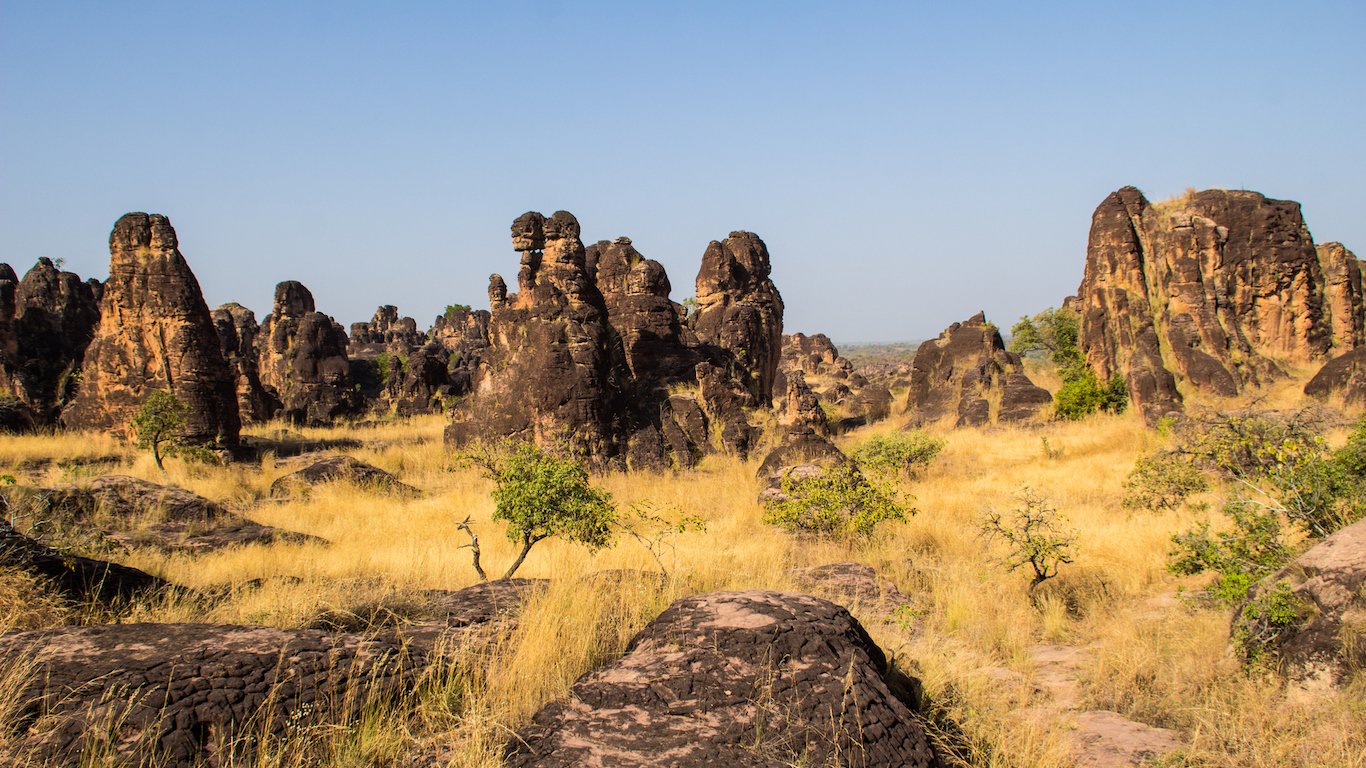
5. Burkina Faso
> 2015 Population: 17.9 million
> 2015 GDP per capita: $615
The State Department has urged American travelers to reconsider visiting the landlocked African nation due to to a host of security concerns. In addition to other violent crimes, including rape and robbery, roadside banditry is a major problem in Burkina Faso. The U.S. Embassy’s ability to provide assistance is also extremely limited in the more remote areas of Burkina Faso.
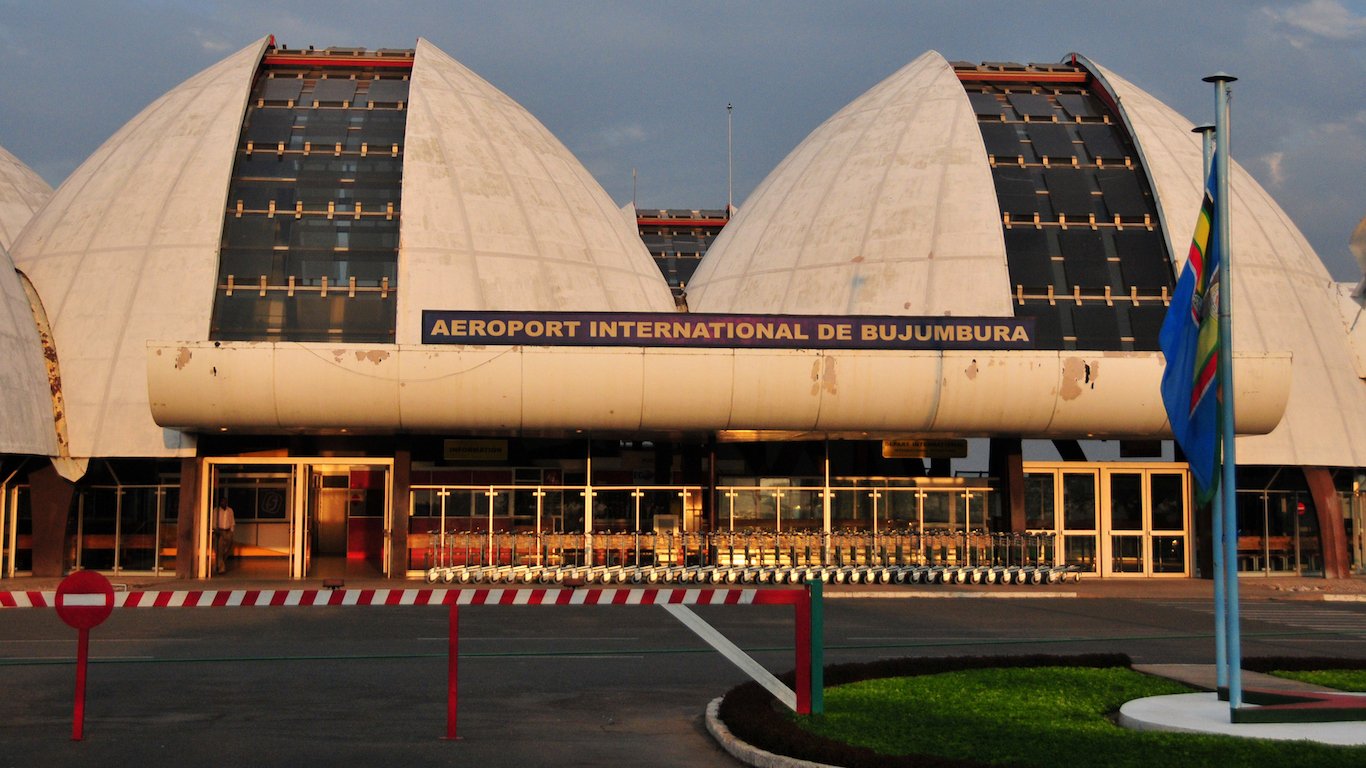
6. Burundi
> 2015 Population: 9.4 million
> 2015 GDP per capita: $306
The State Department advises against all travel to Burundi for American citizens. Following a contested election in 2015, the country is rife with conflict. Violent incidents involving explosives and firearms are common, and the government does not have full control of the military.
[in-text-ad]

7. Cameroon
> 2015 Population: 23.1 million
> 2015 GDP per capita: $1,232
The government advises Americans to carefully consider any travel to Cameroon. Specifically, the State Department advises against travel to the northern and eastern regions of the country. Visitors face especially high risk of violent crime, given that foreigners have been targeted by terrorist group Boko Haram’s kidnappings and suicide bombings.
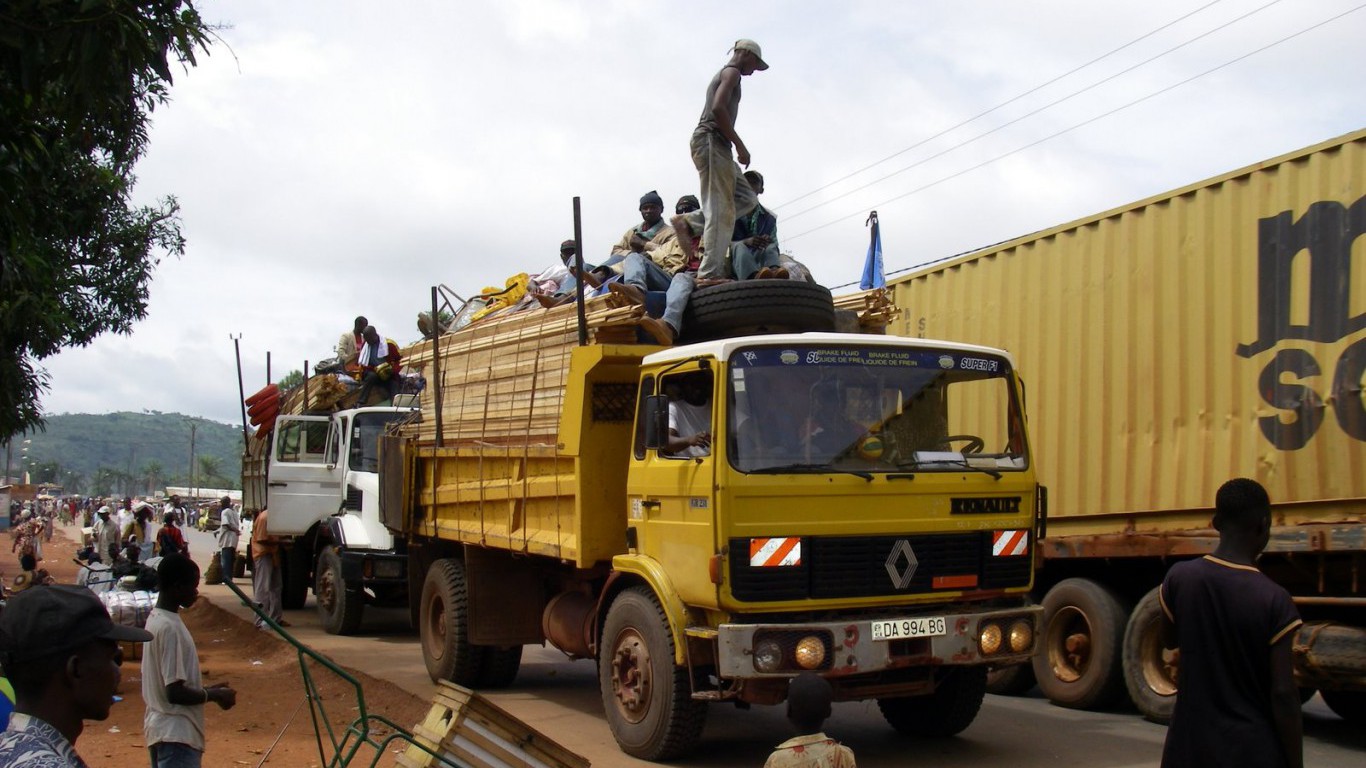
8. Central African Republic
> 2015 Population: 4.8 million
> 2015 GDP per capita: $335
Following the overthrow of the government in 2013, Central African Republic has become highly dangerous for residents and foreigners alike. Though the United Nations has deployed a stabilization force and a new president was elected in 2016, the potential for sectarian and indiscriminate violence is high. In the event the country descends into widespread conflict, which currently seems likely, travelers could find it difficult to leave the country.
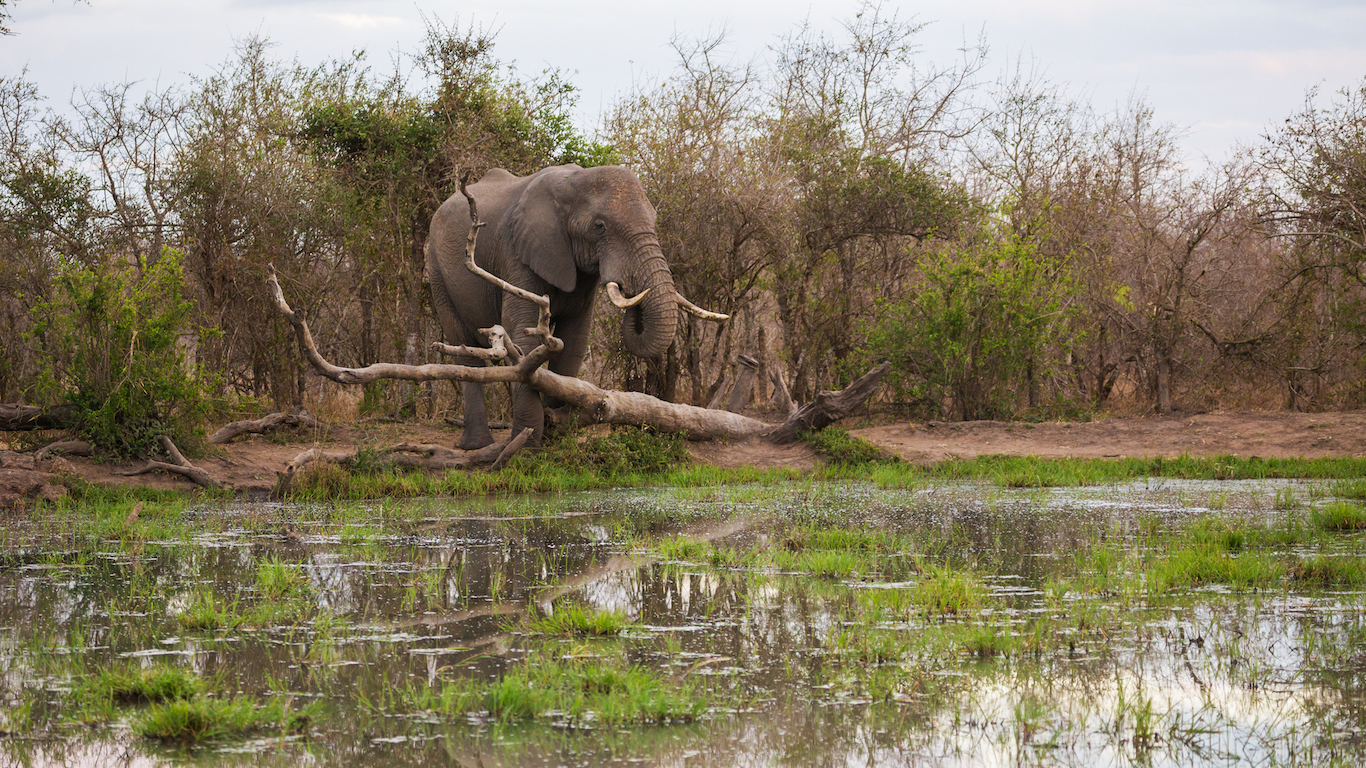
9. Chad
> 2015 Population: 11.6 million
> 2015 GDP per capita: $942
With multiple terrorist groups operating in Chad, the U.S. State Department urges Americans to completely avoid border regions and to exercise extreme caution when traveling in the rest of the country. In addition to 2015 Boko Haram suicide bombings, al-Qaida in the Islamic Maghreb declared its intent to carry out attacks on Western targets in the country.

10. Colombia
> 2015 Population: 48.2 million
> 2015 GDP per capita: $6,084
While Columbia is far safer than many others on this list, the country is still marred with violence linked to drug trafficking. Colombia is also home to terrorist groups such as FARC, which like other terrorist groups condemns American influence on the country.
The Colombian government, after four years of negotiation, recently reached a peace agreement with FARC. However, Colombian voters rejected the agreement in a referendum held on October 2, 2016, leaving open the possibility of continued violence.
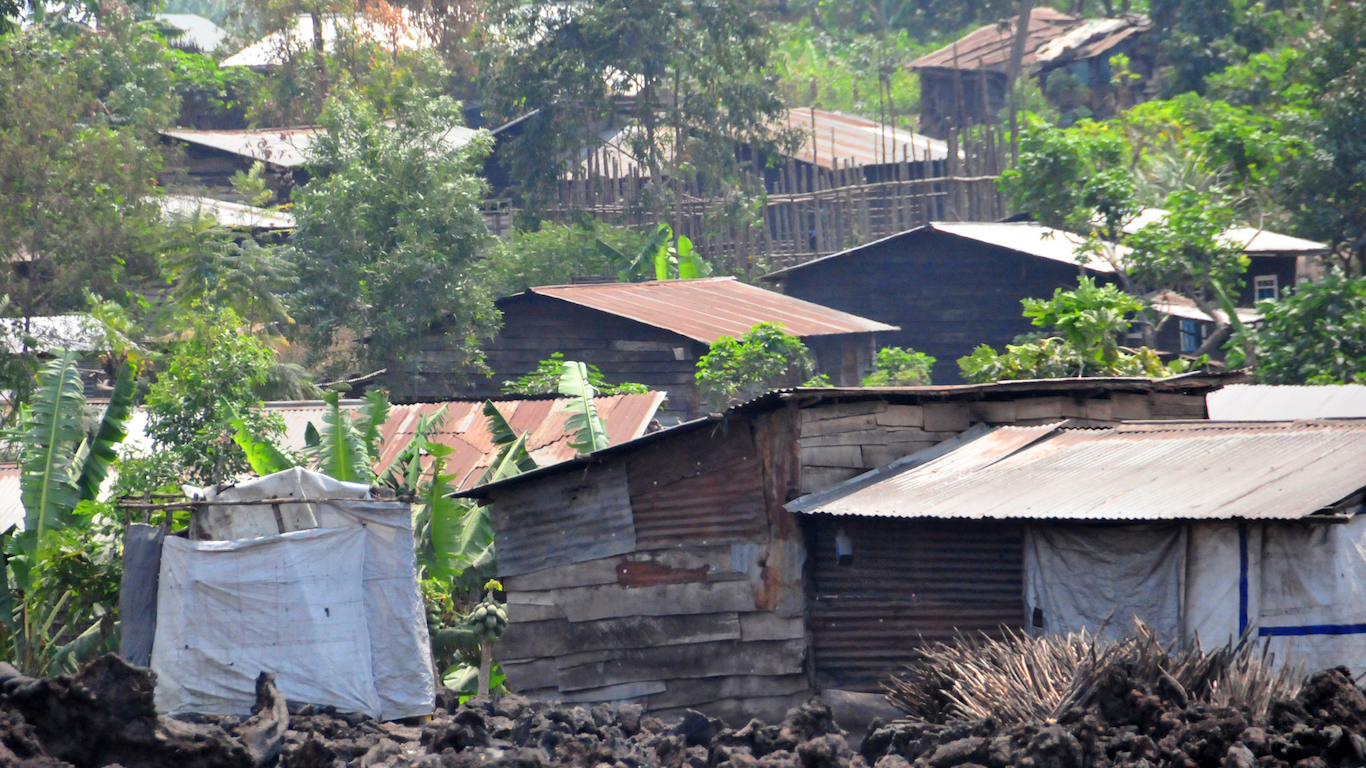
11. Democratic Republic of the Congo
> 2015 Population: 81.7 million
> 2015 GDP per capita: $476
Rife with instability, especially after a violent election in September 2016, the Democratic Republic of the Congo is one of the world’s most dangerous countries. Armed groups, including members of the Congolese armed forces, operate throughout the country and often carry out killings, kidnappings, robberies, and rapes indiscriminately. All family members of U.S. government officials working in the DRC were ordered to leave the country in September.
[in-text-ad]
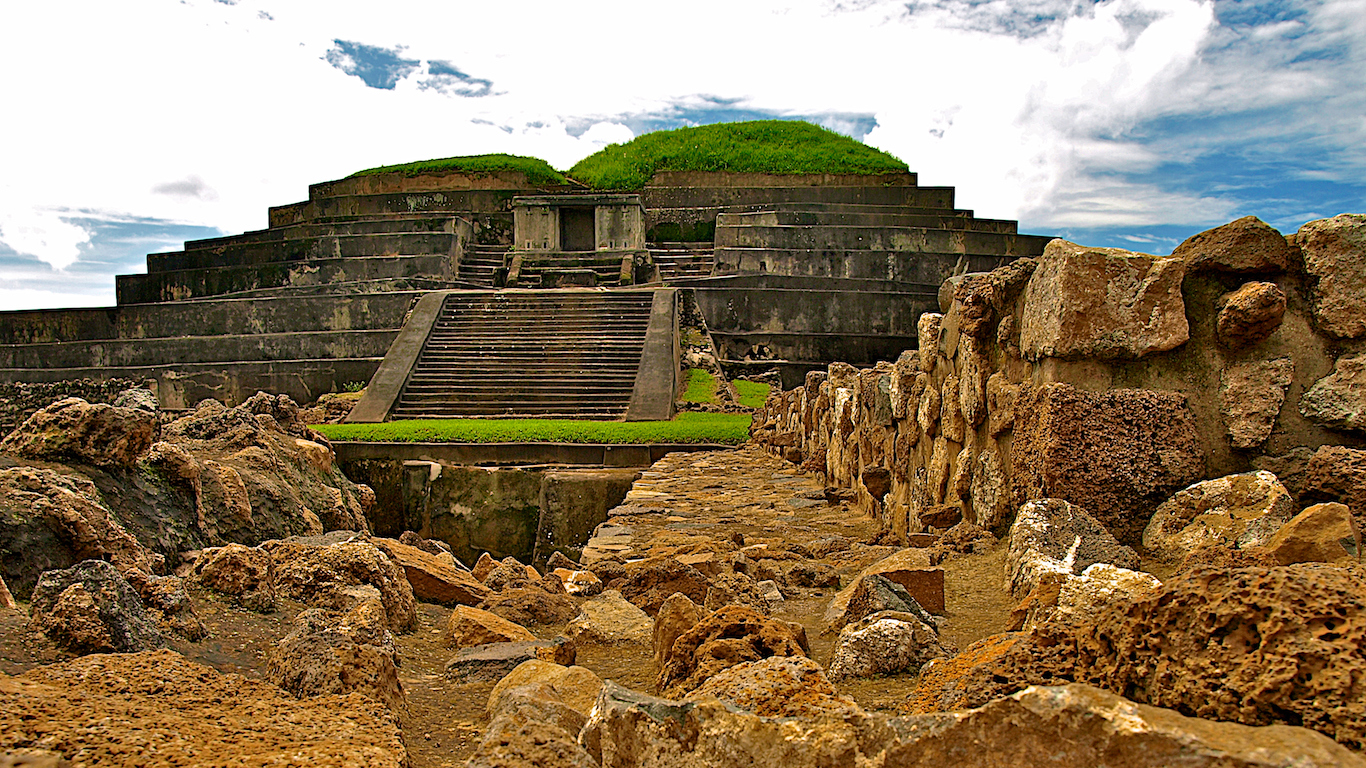
12. El Salvador
> 2015 Population: 6.4 million
> 2015 GDP per capita: $4,040
While there is no evidence to suggest that Americans are being targeted, El Salvador remains a particularly dangerous country for U.S. citizens to travel to. The country’s murder rate is one of the highest in the world, and extortion, mugging, home invasion, and car theft are also relatively common. With rampant crime, the State Department encourages U.S. citizens in the country to remain alert.
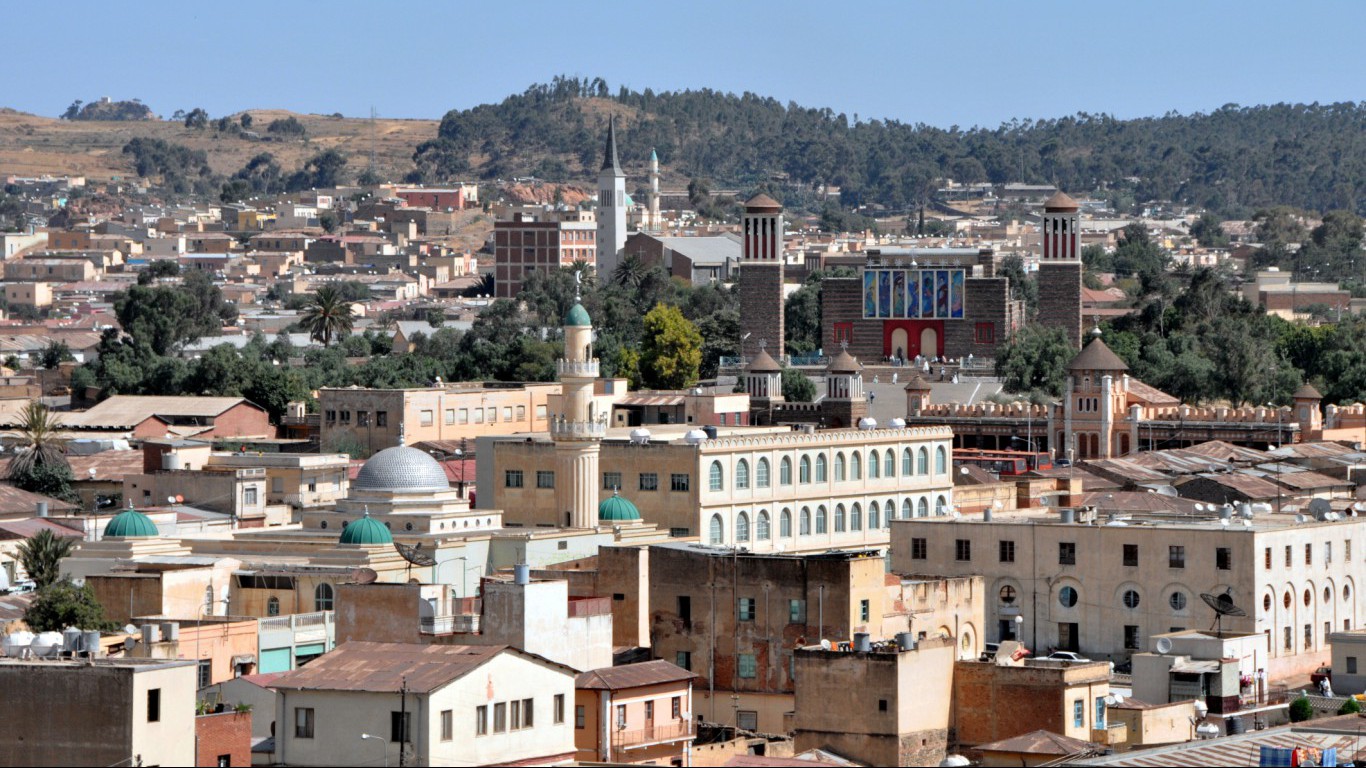
13. Eritrea
> 2015 Population: 6.7 million
> 2015 GDP per capita: $695
Military tensions are high along Eritrea’s borders with neighboring countries, and fighting along the country’s border with Ethiopia in June 2016 resulted in several deaths. Due to restrictions imposed by Eritrea’s government, all foreign nationals are required to obtain permits to travel outside of the country’s capital, Asmara.

14. Haiti
> 2015 Population: 10.7 million
> 2015 GDP per capita: $805
Directly in the path of Category 4 Hurricane Matthew, the State Department advises all Americans who are unable to leave the country to seek shelter immediately. As one of the poorest countries, Haiti’s infrastructure and medical services lag far behind those of more developed Caribbean nations, and damage from the hurricane will only further strain the country’s limited resources.
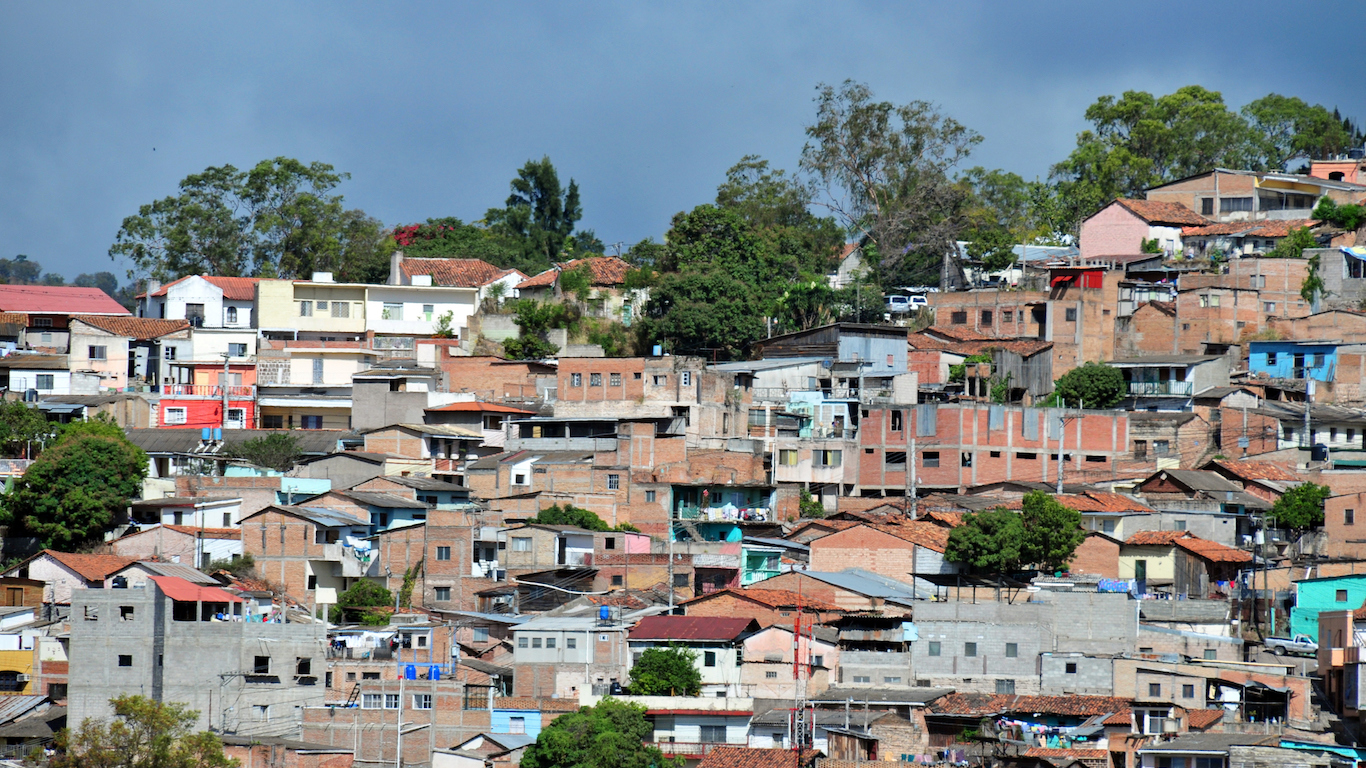
15. Honduras
> 2015 Population: 8.4 million
> 2015 GDP per capita: $2,407
Since 2011, 37 Americans have been murdered in Honduras. Violent crime, and particularly kidnapping, is common throughout the country. As Honduras lacks the necessary resources to defend against, investigate, and prosecute these crimes, the majority of murders in the country go unsolved.
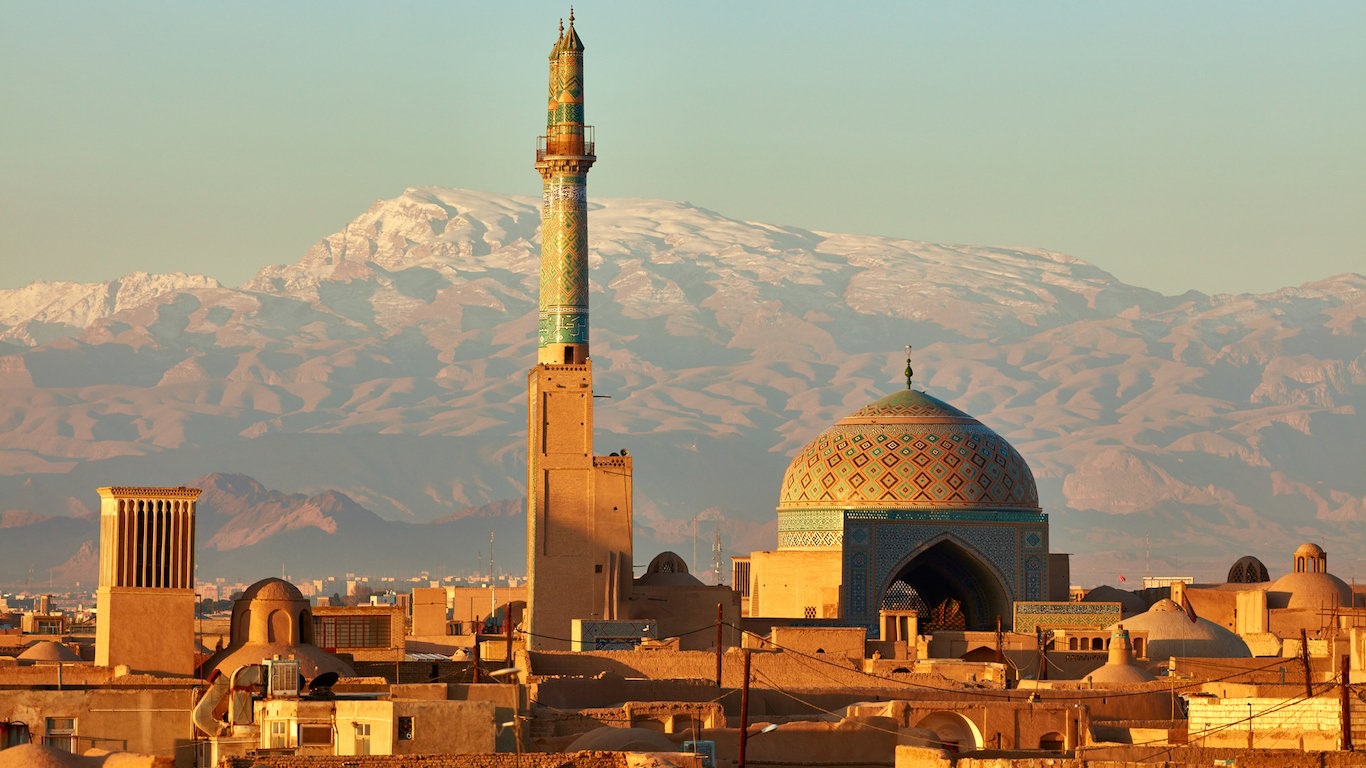
16. Islamic Republic of Iran
> 2015 Population: 79.5 million
> 2015 GDP per capita: $4,877
Americans traveling in Iran, particularly those who are also Iranian citizens, are at risk of being detained and imprisoned for suspected espionage. The United States has not had an embassy in Iran since it broke diplomatic relations with the country in 1980. As a result, the State Department reminds Americans that its “ability to assist U.S. citizens in Iran in the event of an emergency is extremely limited.”
[in-text-ad]
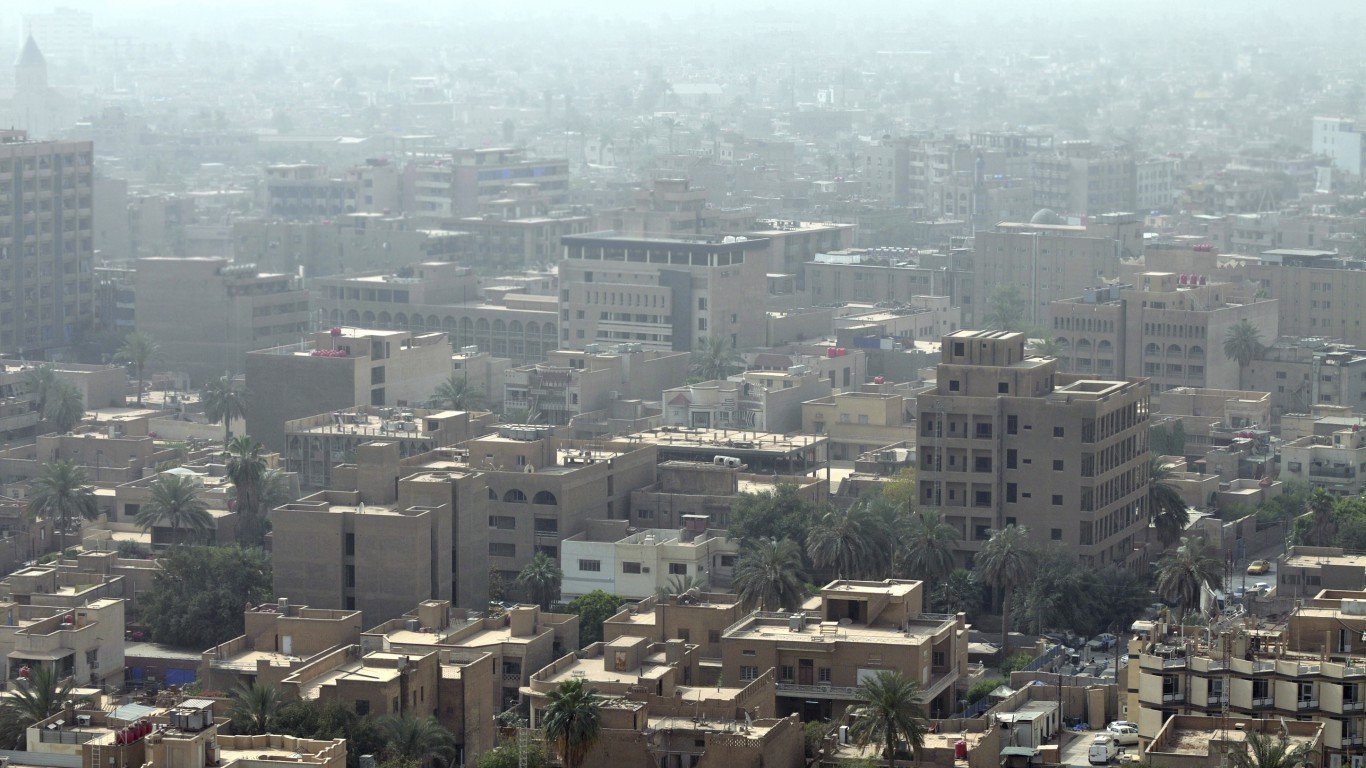
17. Iraq
> 2015 Population: 35.2 million
> 2015 GDP per capita: $4,819
With many active militant and terrorist groups, Iraq is especially dangerous, particularly for Americans. U.S. citizens are often targeted by sectarian militias in kidnappings and other violence. In addition to large swaths of territory in northern, western, and central Iraq, ISIS currently controls Mosul, the second largest city in the country.
Supporters of the Iraqi and Western governments, as well as those who identify as LGBT or are religious or ethnic minorities, are at increased risk of imprisonment or execution in ISIS-controlled territories.
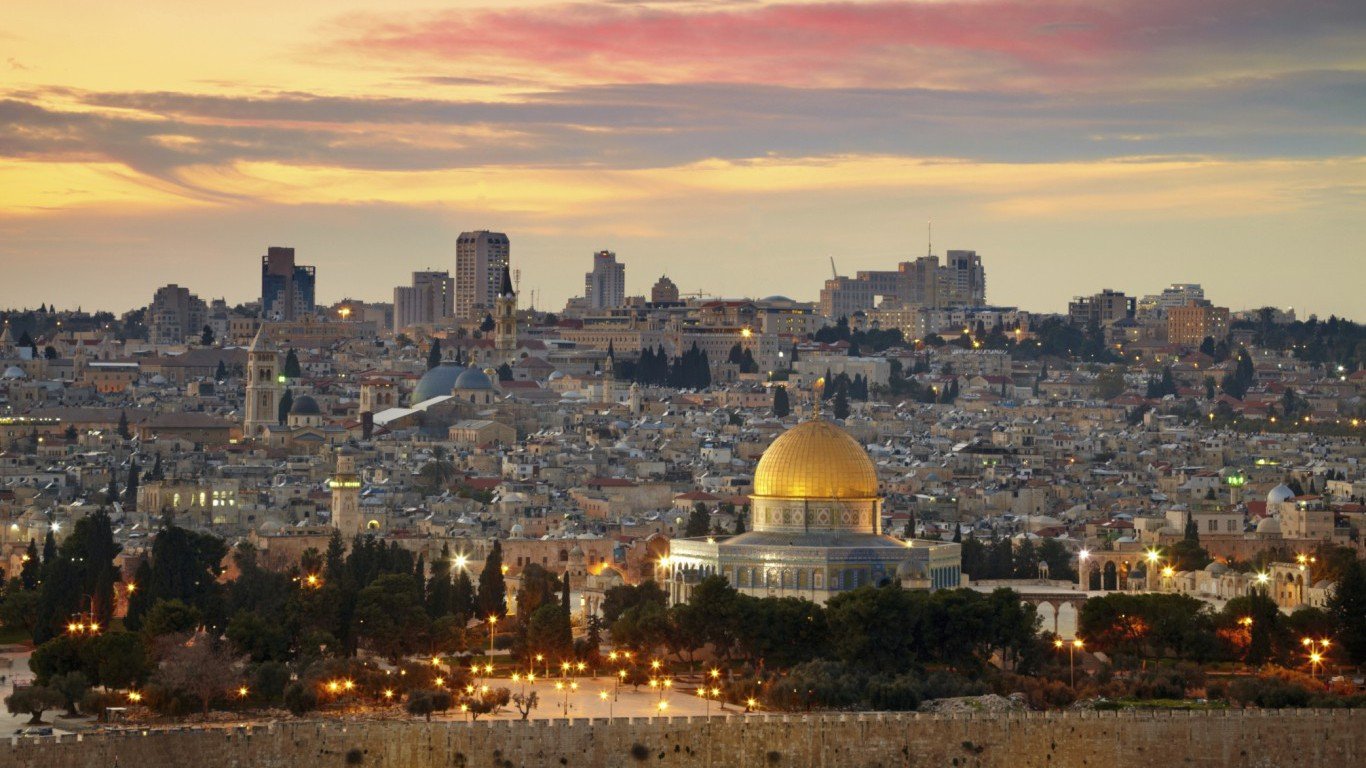
18. Israel
> 2015 Population: 8.4 million
> 2015 GDP per capita: $35,343
The security situation in the contested regions of Israel — particularly the West Bank and the Gaza Strip — is complex and unpredictable. Hamas, the terrorist organization in control of Gaza, reached a ceasefire with Israel in 2014. However, violent attacks that often lead to collateral damage still occur with some regularity.
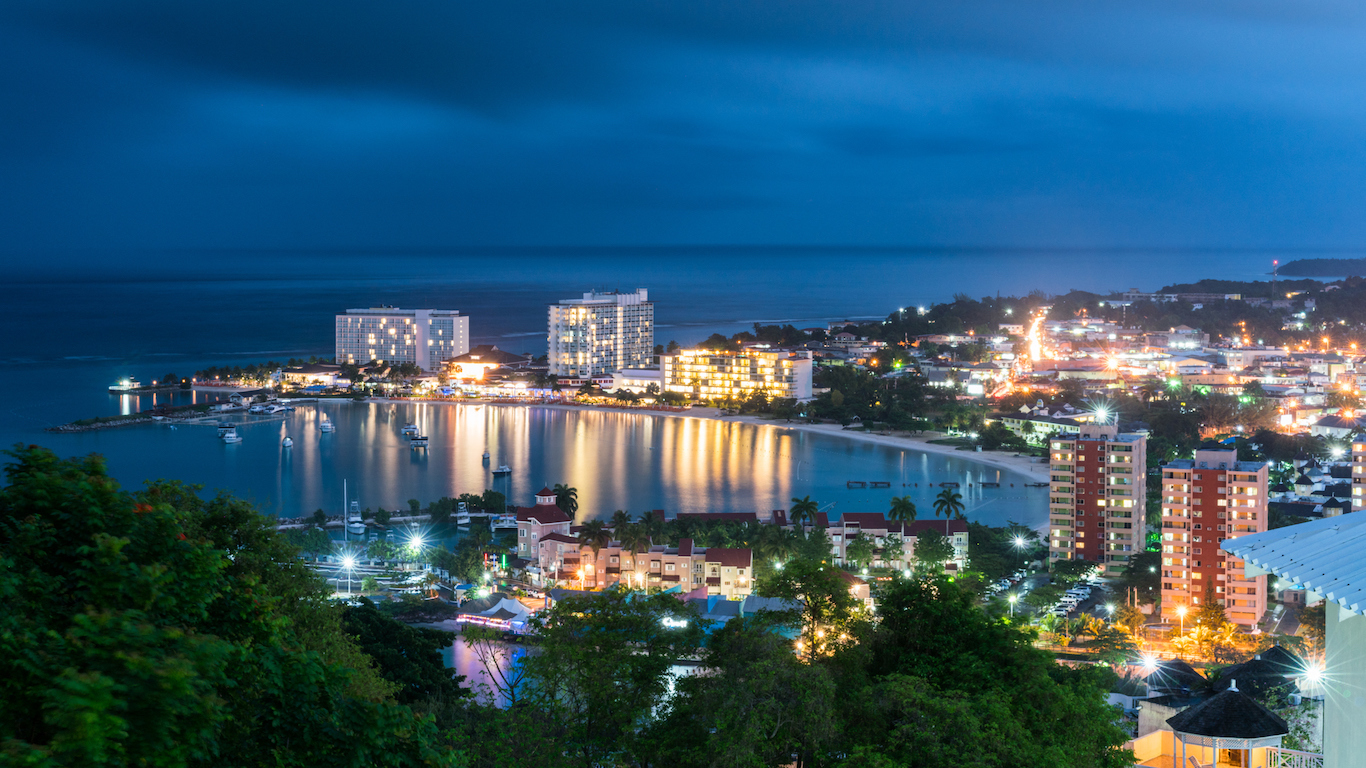
19. Jamaica
> 2015 Population: 2.8 million
> 2015 GDP per capita: $4,948
One of three countries with a standing travel warning due the potential effects of Category 4 Hurricane Matthew. The State Department encourages all American citizens to leave the Caribbean island country as soon as possible. The departure of all non-essential personnel in the U.S. Embassy in Kingston was arranged immediately by the State Department.
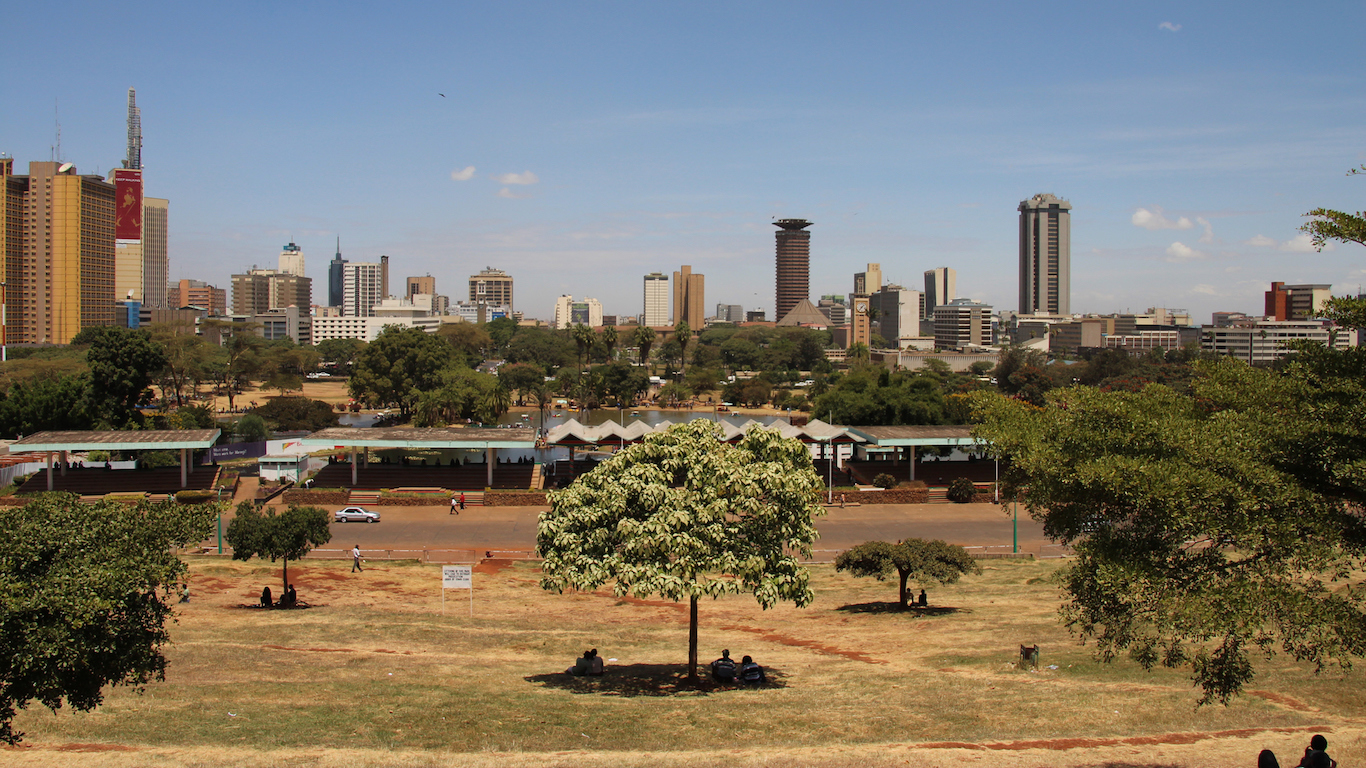
20. Kenya
> 2015 Population: 44.2 million
> 2015 GDP per capita: $1,388
While thousands of Americans travel safely to and from the east African country, terrorist groups have made parts of Kenya unsafe for travel. The terrorist organization al-Shabaab typically operates in the country’s border areas, targeting bars, nightclubs, public transit as well as government sites. The group claimed responsibility for an April 2015 attack on a university that claimed nearly 150 lives.

21. Lebanon
> 2015 Population: 4.6 million
> 2015 GDP per capita: $11,237
Threats of terrorist attacks and kidnapping make Lebanon an especially risky country for American travelers. Multiple terrorist groups, including ISIS and Hezbollah, operate in the country. Suicide bombings across the country in the last two years have claimed dozens of lives. According to the State Department, Americans choosing to remain in Lebanon should remember that access to an airport may be cut off in the event of violent conflict.
[in-text-ad]
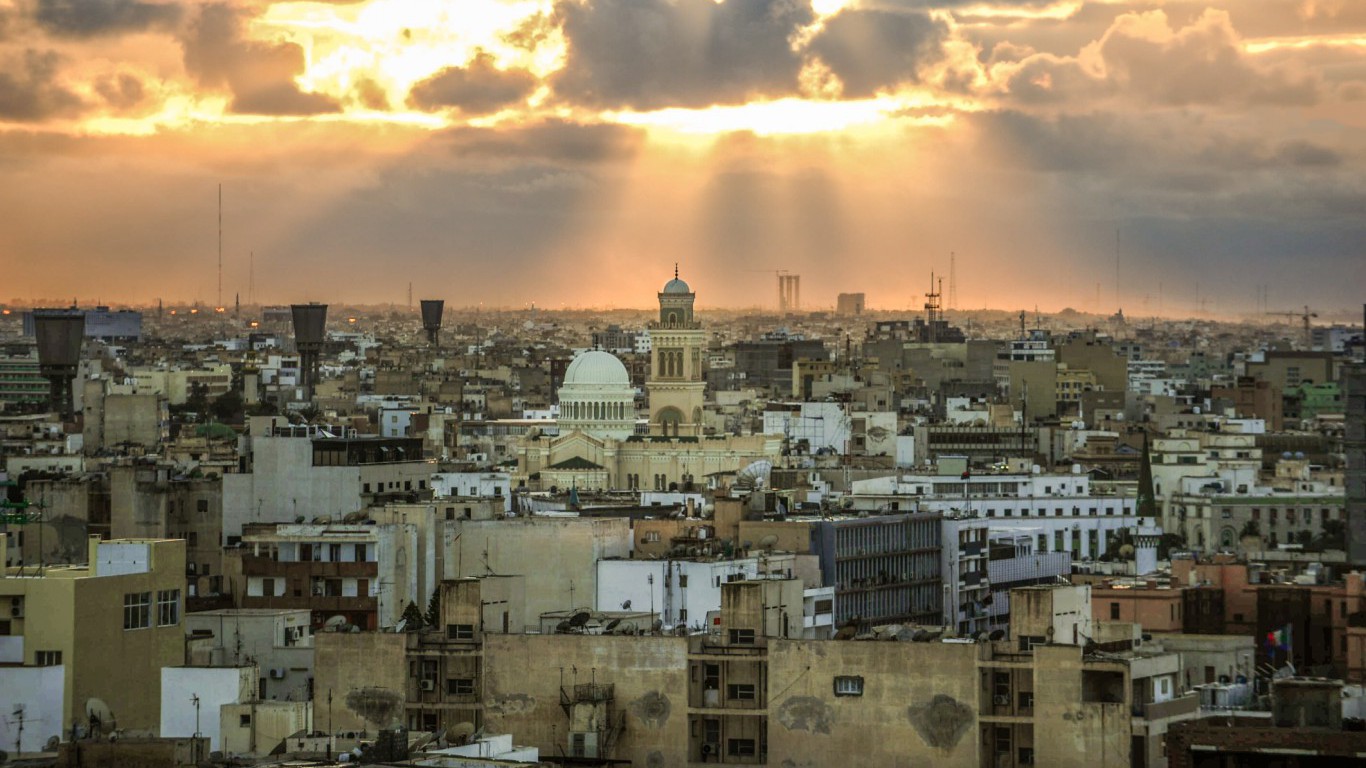
22. Libya
> 2015 Population: 6.3 million
> 2015 GDP per capita: $6,059
The State Department’s advisory against travel to Libya is far stronger than in most other areas. The government discourages all travel to the country and urges all Americans there to depart immediately. Crime is rampant in Libya, and the government’s control is limited to certain areas. Extremist groups are known to target Americans, and the U.S. government shuttered its embassy in the country in July 2014, about two years after the deadly Benghazi attack in which U.S. Ambassador to Libya Christopher Stevens and three officers were killed.
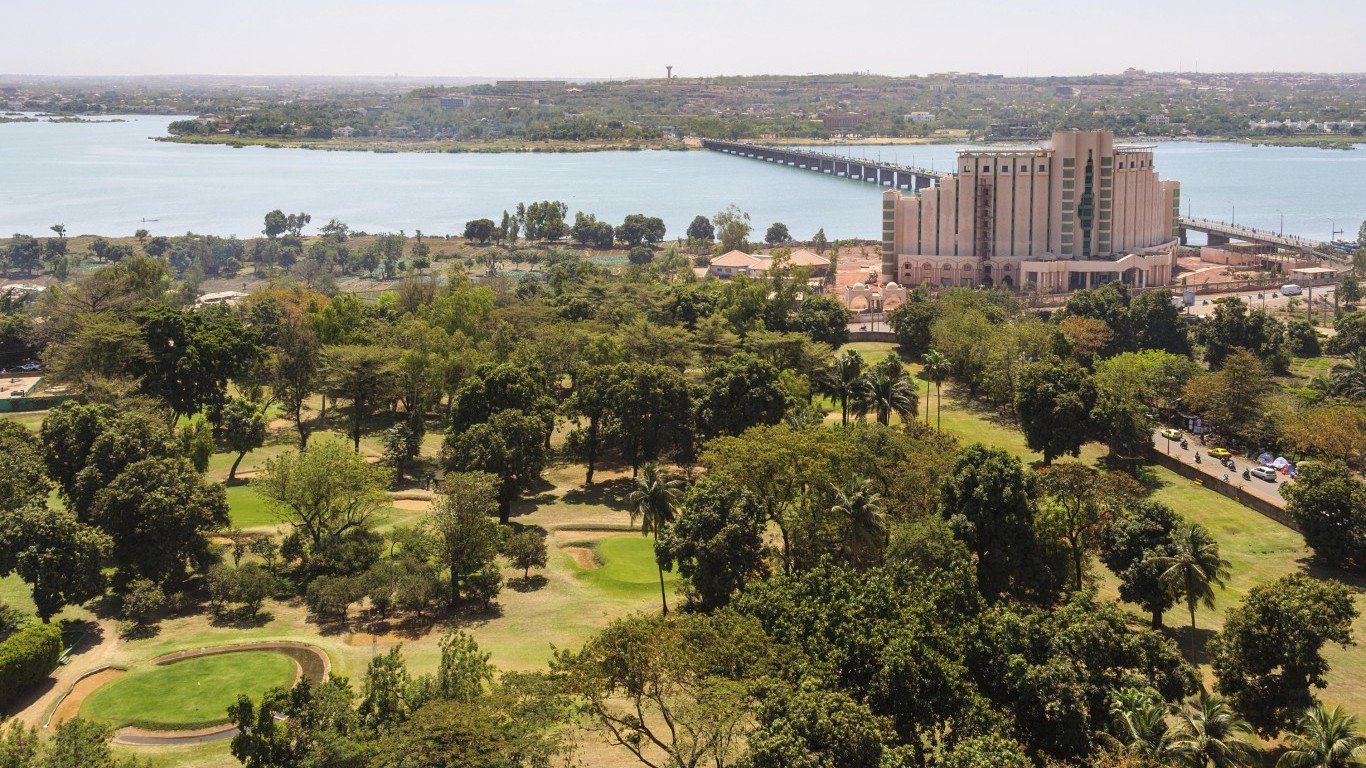
23. Mali
> 2015 Population: 16.3 million
> 2015 GDP per capita: $802
Multiple terrorist groups, including al-Qaida in the Islamic Maghreb, currently operate within Mali. Such groups, which have been known to target foreigners, claimed responsibility for a November 2015 attack on a hotel that killed 19 people, including one American. Due to the unstable security situation, American officials are restricted from traveling outside the country’s capital region.

24. Mauritania
> 2015 Population: 3.7 million
> 2015 GDP per capita: $1,282
Like many other countries in the region, the presence of terror groups makes Mauritania an especially unsafe country for American travelers. Dangers include kidnapping and other violent acts. U.S. Embassy officials are restricted from traveling outside of the capital city without special authorization.

25. Mexico
> 2015 Population: 127.0 million
> 2015 GDP per capita: $9,009
Despite sharing a border with California, Arizona, New Mexico, and Texas, Mexico is one of the more dangerous countries for American travelers. Though millions of Americans travel annually to popular tourist destination that are generally safe, much of the rest of country is unsafe due to regular violence tied to drug trafficking. Kidnapping, carjacking, robbery, and gun battles between rival gangs are not uncommon in these parts.
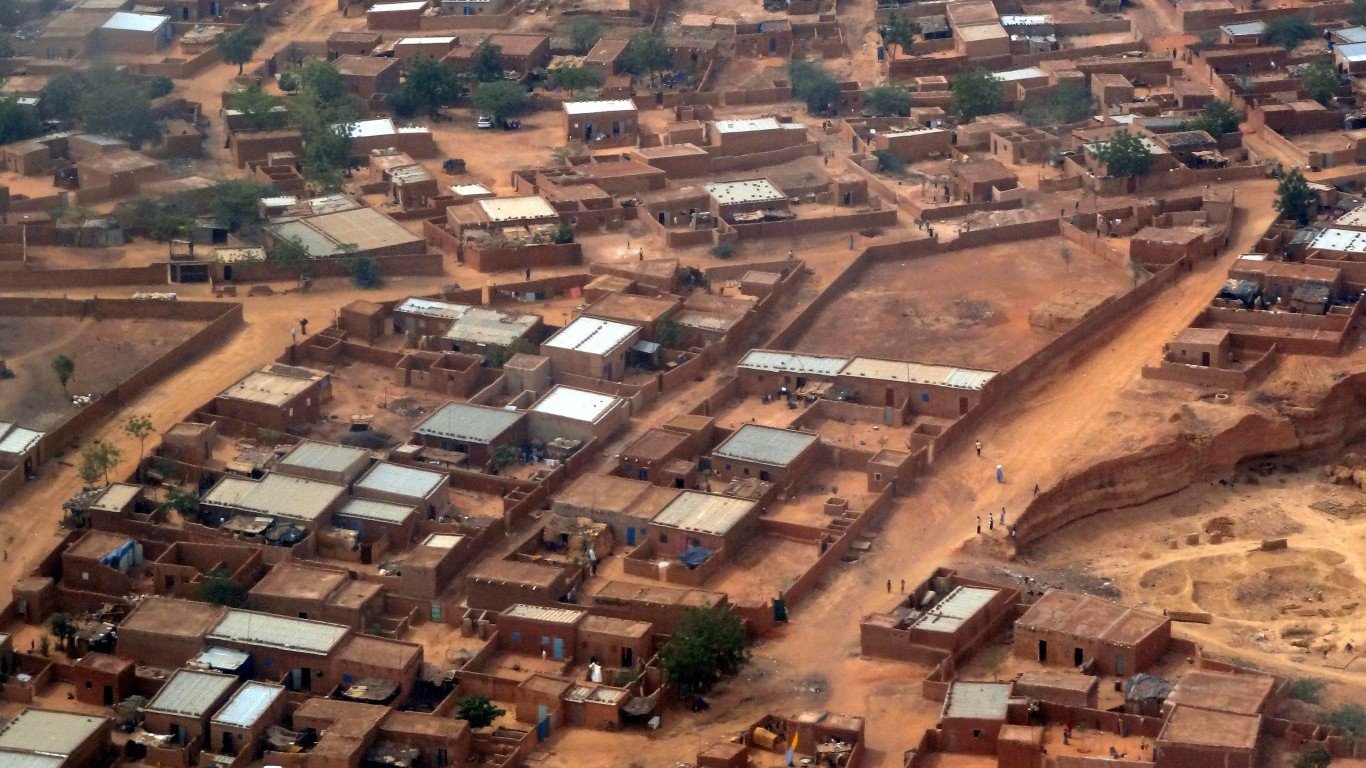
26. Niger
> 2015 Population: 17.6 million
> 2015 GDP per capita: $405
Many areas of Niger are remote, and the U.S. Embassy’s ability to assist Americans in emergency situations in these rural areas is severely limited. The terrorist group Boko Haram, among others, operates in the country, and terrorist activities have caused aid organizations, NGOs, and foreign companies to suspend operations in the country.
[in-text-ad]
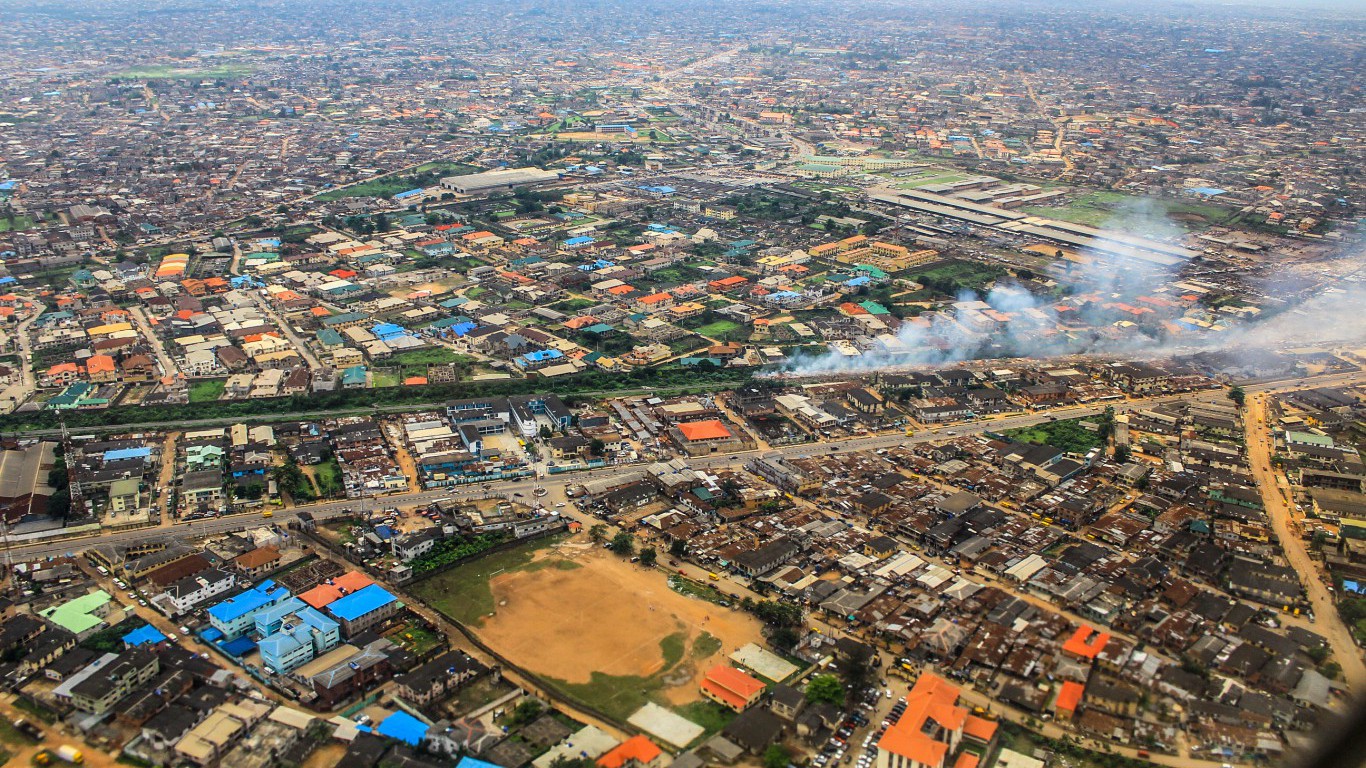
27. Nigeria
> 2015 Population: 178.7 million
> 2015 GDP per capita: $2,743
The State Department advises against all non-essential travel in the northeast region of Nigeria, where Boko Haram has carried out multiple attacks. Due to the threat of terrorism, Americans are advised to avoid large crowds and certain destinations, including shopping malls, churches, clubs, and markets. Kidnappings and robberies are also common in certain parts of Nigeria.
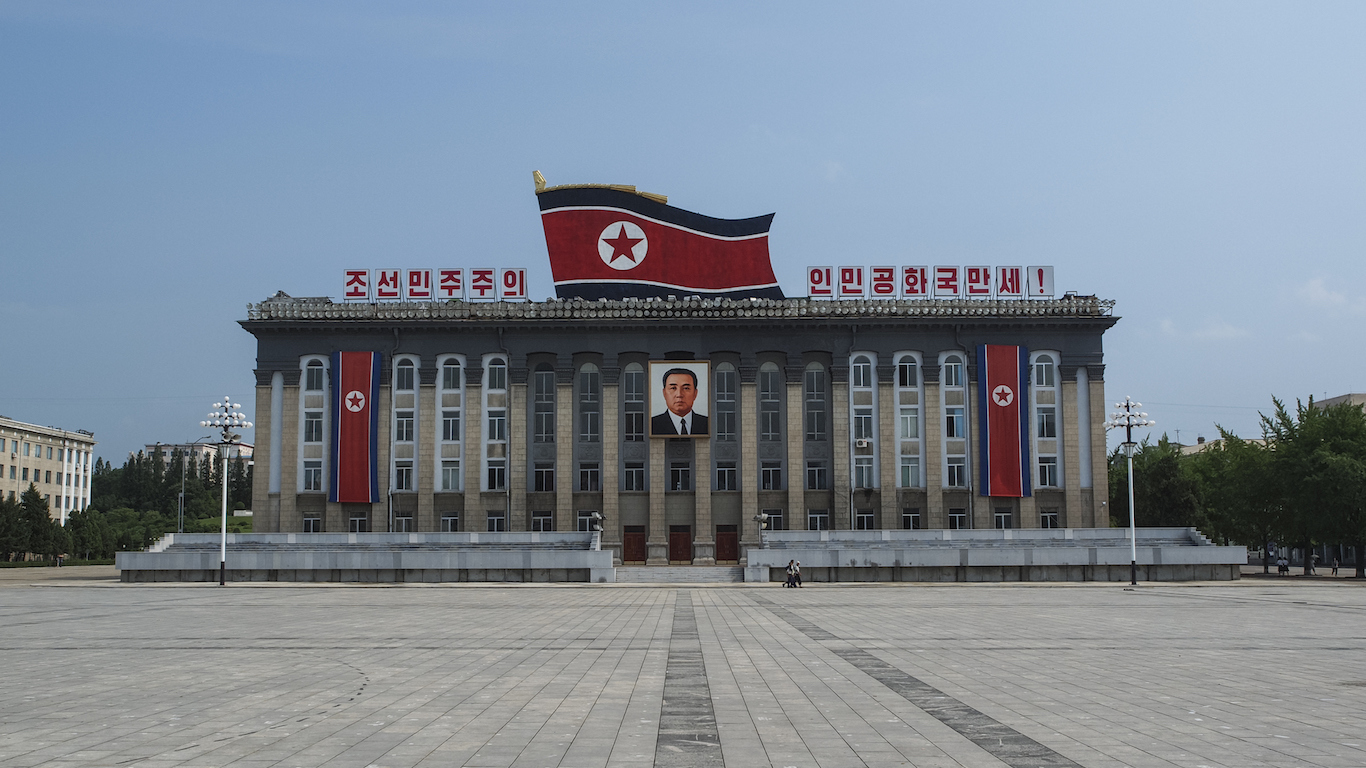
28. North Korea
> 2015 Population: million
> 2015 GDP per capita: N/A
In many dangerous countries, terrorist groups unaffiliated with the government pose the biggest risk to personal safety. In North Korea, however, the government itself poses the greatest risk to American visitors. Electronic devices, including laptops, smartphones, and USB drives, are subject to search for prohibited content, such as media that is critical of the North Korean government. U.S. citizens risk arrest, fines, long-term detention, and hard labor for certain such transgressions and others that are not considered crimes in the United States.
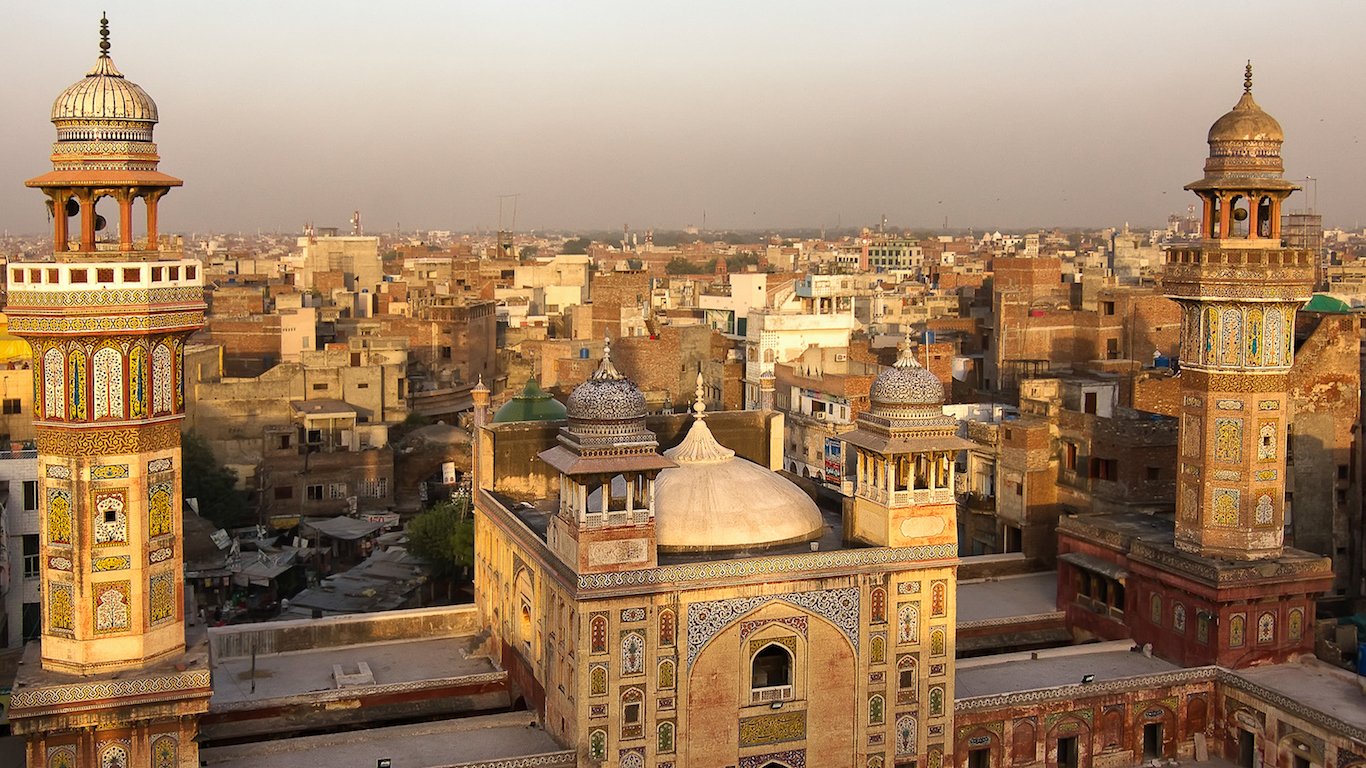
29. Pakistan
> 2015 Population: 186.2 million
> 2015 GDP per capita: $1,450
Deadly terrorist attacks are relatively common in Pakistan — and they frequently target areas where Americans and other Westerners congregate. Americans are also the targets of kidnappings. Because of security risks, U.S. government officials in the country are prohibited from using public transportation or staying at hotels.

30. Philippines
> 2015 Population: 102.2 million
> 2015 GDP per capita: $2,858
While certain cities in the Philippines such as Davao City and Surigao City have been free of terrorist threats and incidents recently, other parts of the country are deemed unsafe for American travelers. Kidnapping and terrorist violence is relatively common on the island of Mindanao and the Sulu Archipelago.
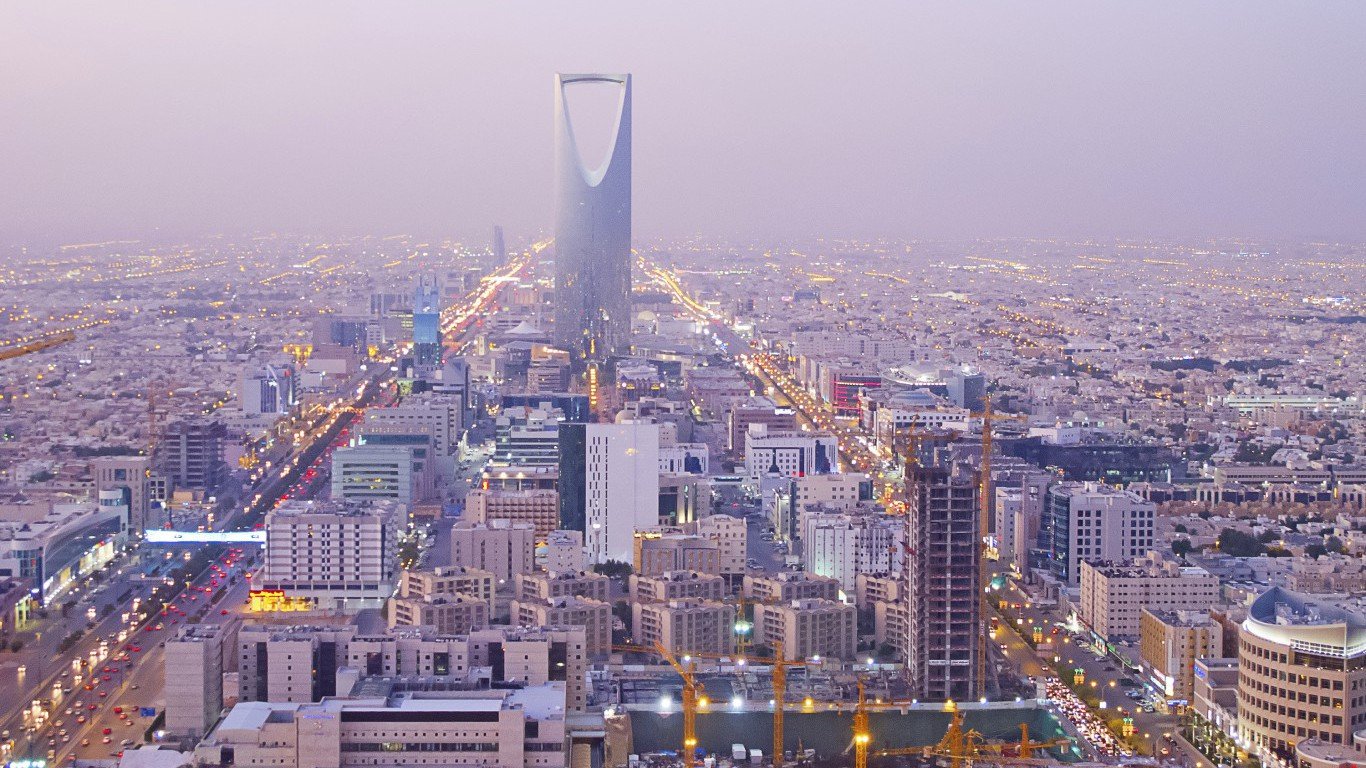
31. Saudi Arabia
> 2015 Population: 31.4 million
> 2015 GDP per capita: $20,813
With Iraq to the north and Yemen to the south, Saudi Arabia is surrounded by countries that serve as bases of operations for multiple terrorist groups, including ISIS and al-Qaida. Such groups frequently target Western interests in Saudi Arabia as well as mosques, hotels, restaurants, and schools.
[in-text-ad]
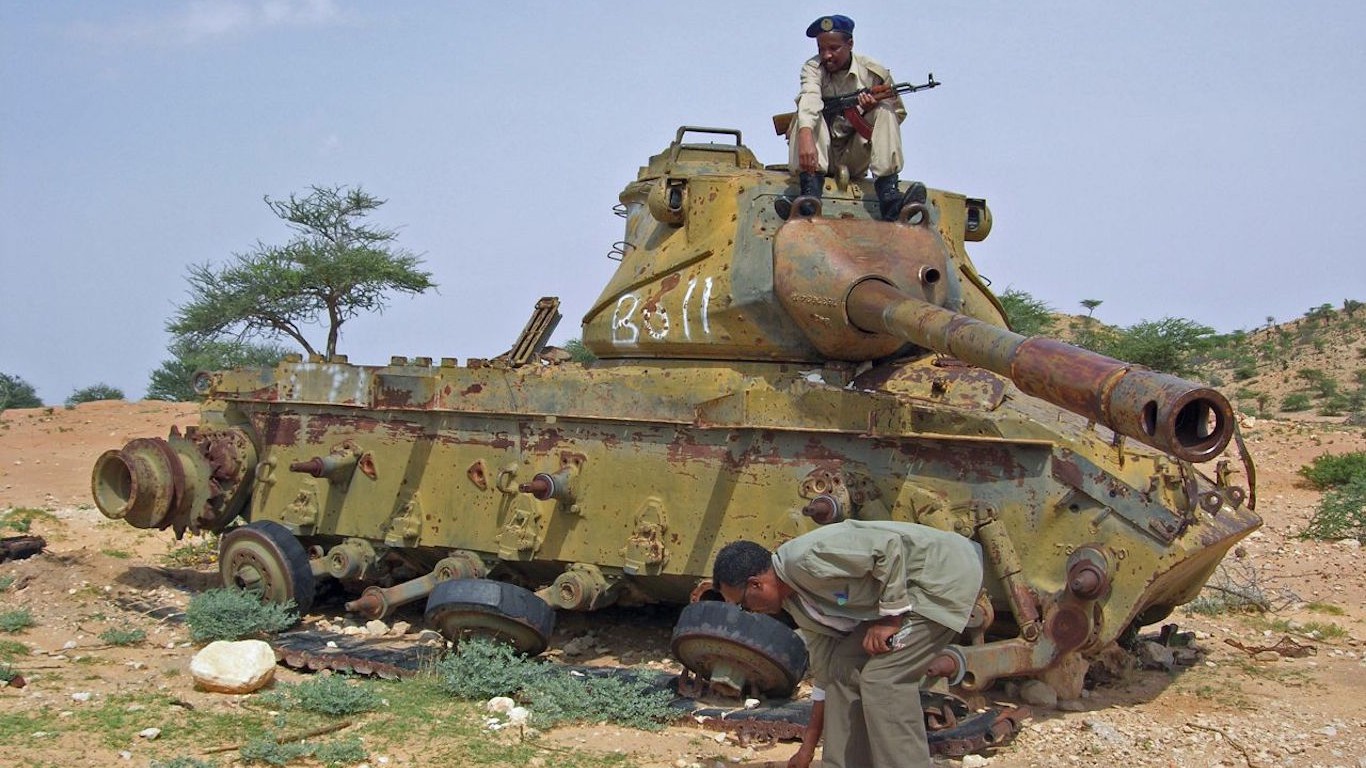
32. Somalia
> 2015 Population: N/A
> 2015 GDP per capita: N/A
With no U.S. embassy, the State Department is greatly limited in its ability to help U.S. citizens in Somalia. Terrorist group Al-Shabaab is active in the country, and terrorist attacks across Somalia have targeted international relief workers, as well as restaurants and hotels frequented by Westerners. In 2015 alone there were at least eight attacks on hotels in the country’s capital, Mogadishu.
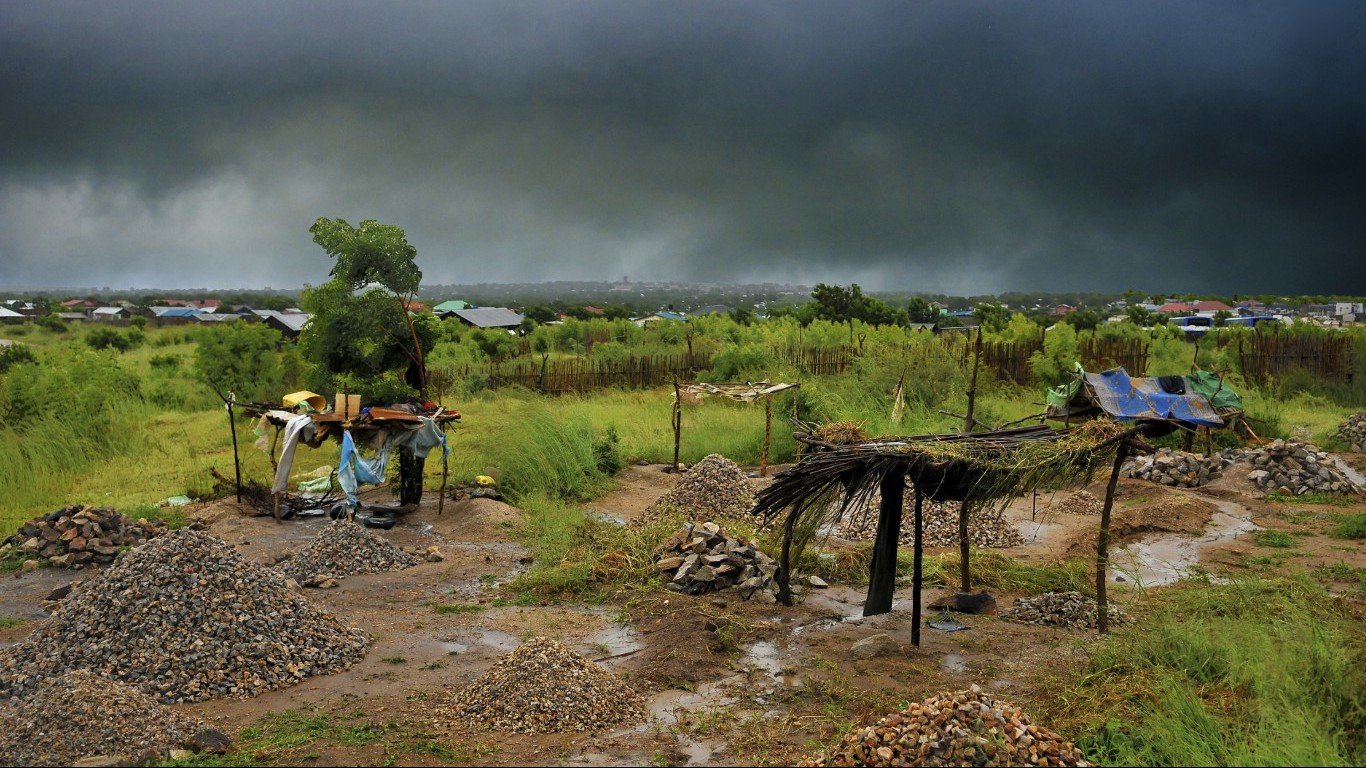
33. South Sudan
> 2015 Population: 11.9 million
> 2015 GDP per capita: $221
According to the U.S. State Department, South Sudan is rife with political violence and violent crime and is unsafe for American visitors. Fighting between the government and rebel forces in the summer of 2015 led to an unstable security situation. The violence persists today despite the signing of a peace treaty and the implementation of a transitional government. Violence is not limited to the parties involved as foreign aid workers have been targeted in robberies, assaults, and shootings.
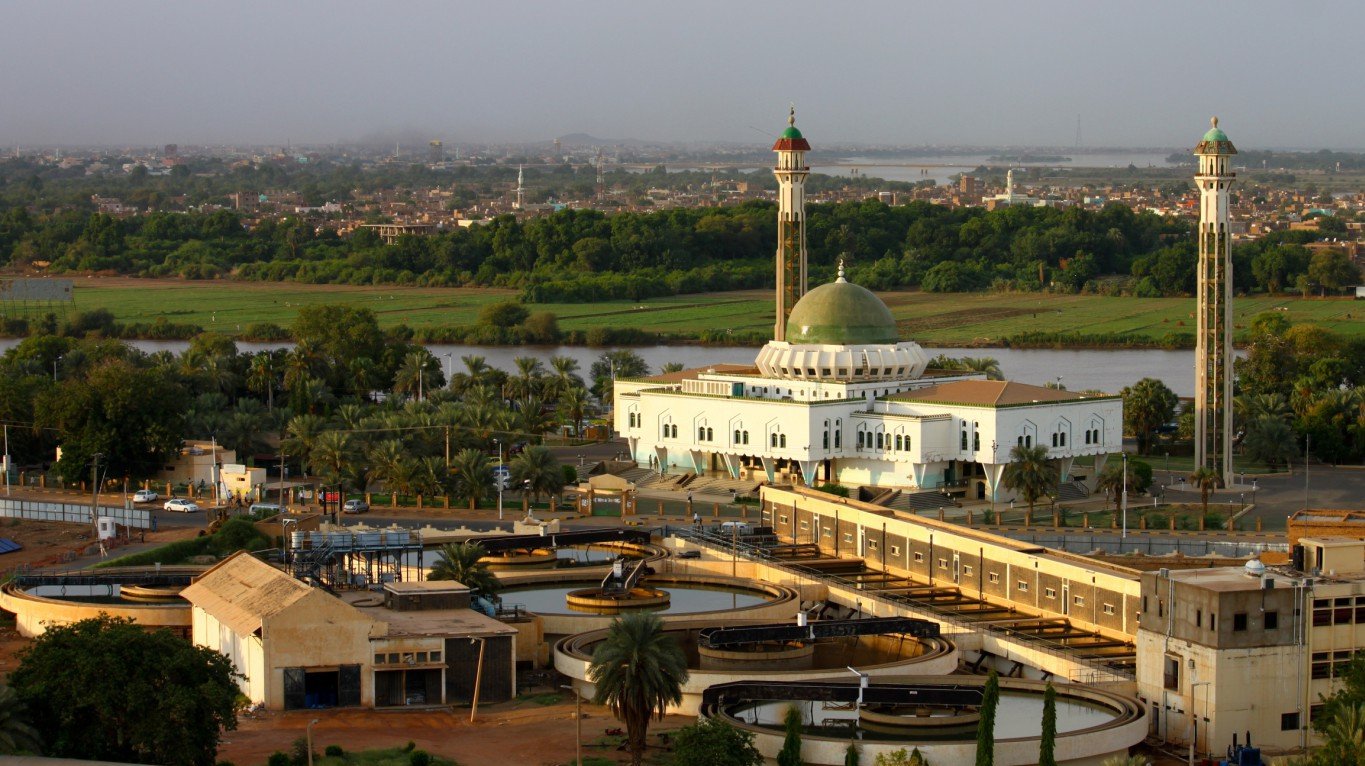
34. Sudan
> 2015 Population: 38.4 million
> 2015 GDP per capita: $2,175
Due to frequent tribal violence and banditry, the Darfur region, along the Sudan’s border with Chad, is particularly dangerous. Other parts of the country have active minefields and are marred by violence between Sudanese forces and rebel groups. The country is also home to multiple terrorist organizations known to specifically target Westerners and Western interests with suicide bombings, shootings, and kidnappings.
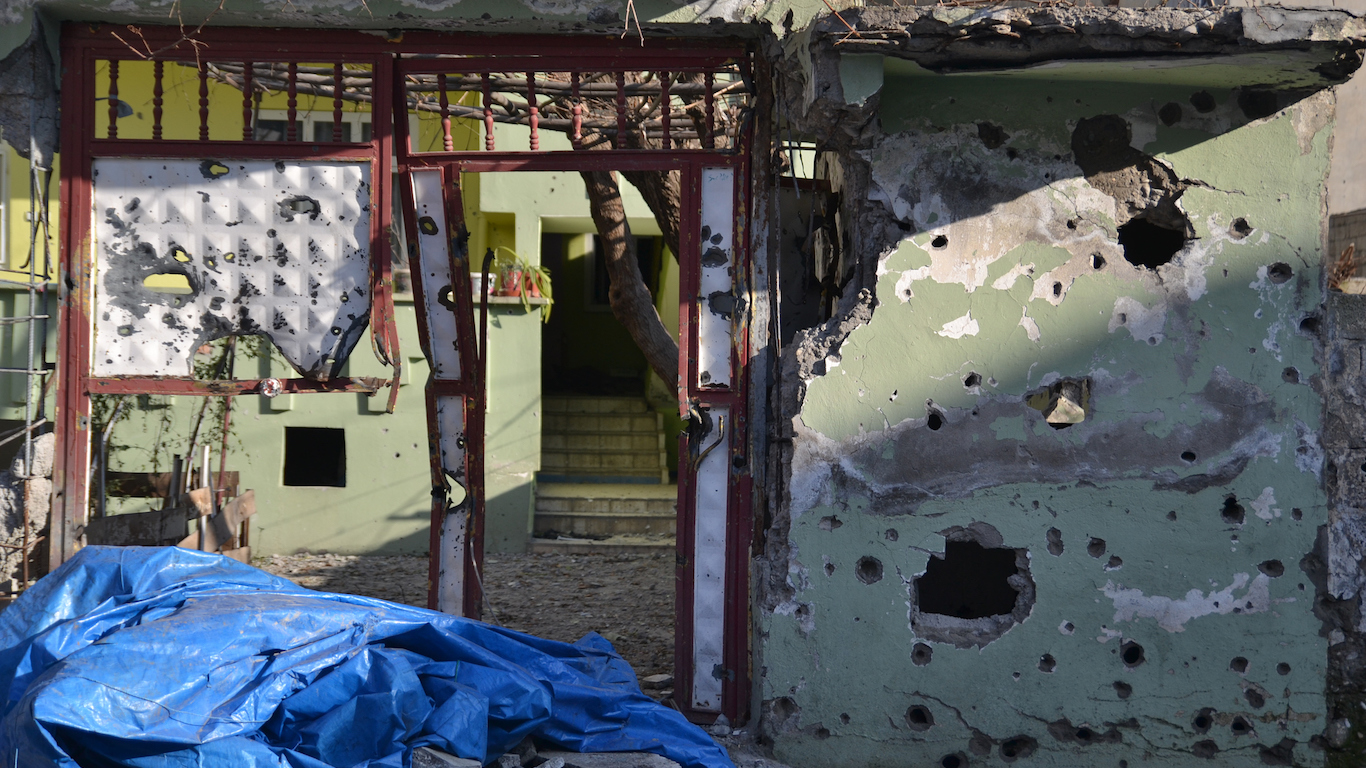
35. Syria
> 2015 Population:N/A
> 2015 GDP per capita: N/A
The State Department discourages all travel to Syria and urges all Americans in the country to depart immediately. Currently, the country is at the epicenter of opposing global interests. Fighting between the government, backed by Iran and Russia, and U.S. backed rebel forces, has been especially gruesome and costly. The use of chemical weapons and the intentional destruction of critical infrastructure have been widely reported. In addition, with a major stronghold in the northeastern city of Raqqa, the terrorist group ISIS regularly carries out bombings and shootings within the country.

36. Tunisia
> 2015 Population: 11.1 million
> 2015 GDP per capita: $3,923
The travel warning for Tunisia exists largely because of terror threats along the country’s border with Libya. Recent attacks, initiated by groups affiliated with ISIS, have targeted tourist destinations as well as government interests. The State Department recommends Americans visiting the country remain vigilant and cautious.
[in-text-ad]
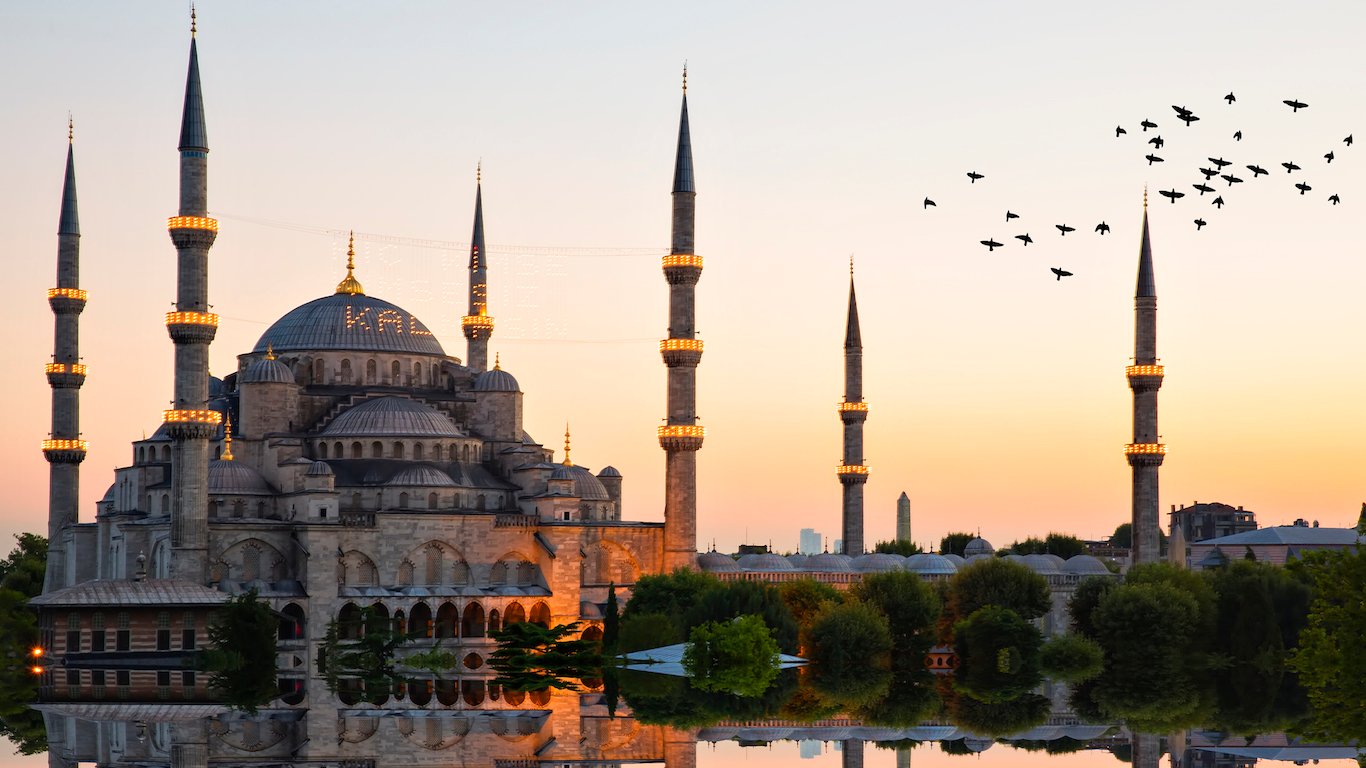
37. Turkey
> 2015 Population: 77.7 million
> 2015 GDP per capita: $9,437
Security circumstances are changing rapidly in Turkey following an attempted military coup in July 2016. The coup came on the heels of a deadly terrorist bombing at Istanbul’s international airport. The country is currently in a state of emergency, and the State Department advises U.S. citizens to only stay at hotels that are taking active security measures and to avoid large crowds, particularly those that are popular tourist destinations.

38. Ukraine
> 2015 Population: 42.6 million
> 2015 GDP per capita: $2,125
In addition to the Crimean Peninsula, which was invaded by Russia in 2014, the State Department urges Americans to stay away from Donetsk and Luhansk, cities in eastern Ukraine controlled by separatists supported by Russia. Explosions from landmines and rocket attacks in the area are frequent and have been deadly. American citizens have also been kidnapped and detained by separatist forces.
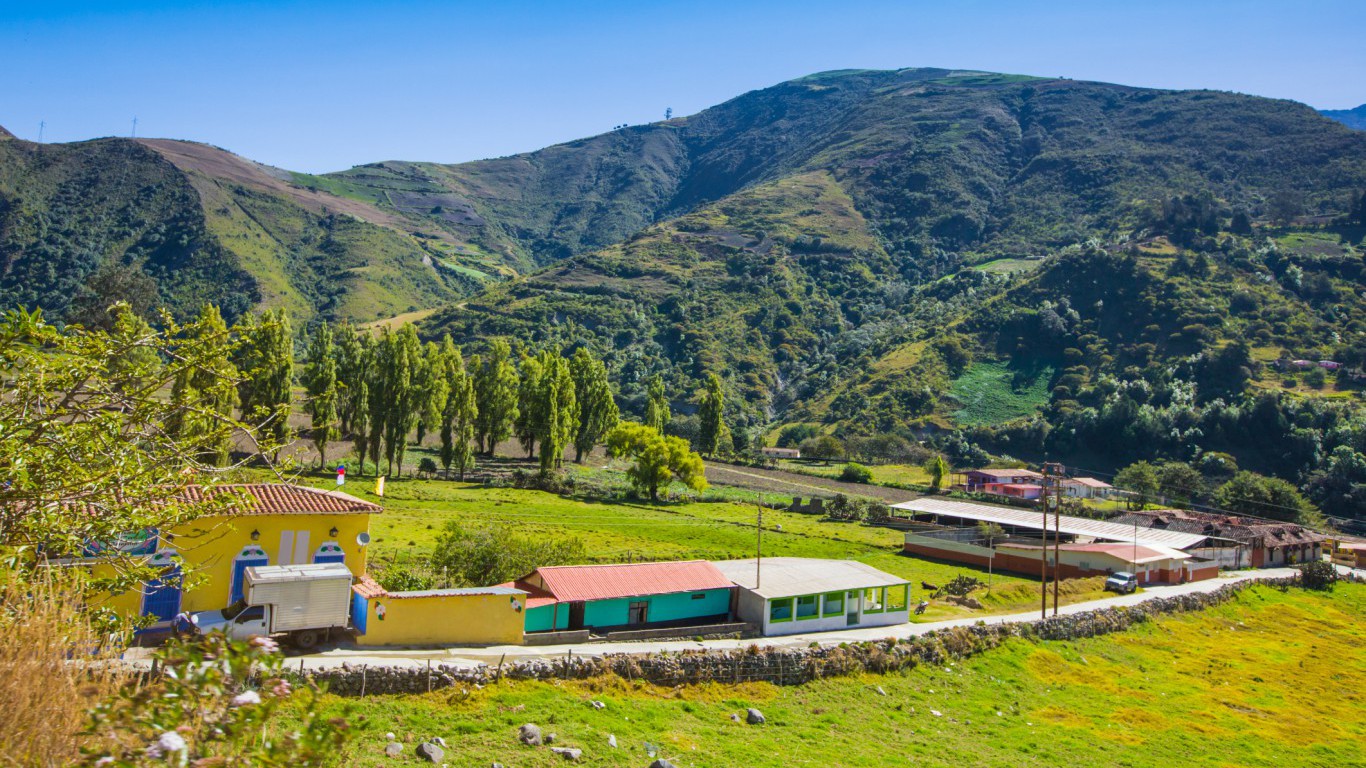
39. Venezuela
> 2015 Population: 30.9 million
> 2015 GDP per capita: $7,745
Rapid inflation of the Venezuelan currency has sent shockwaves through the country. Food and water shortages, along with inadequate access to electricity and medicine, have caused widespread unrest. The country has the world’s second highest homicide rate, and criminals have been known to use assault rifles and explosives on undefended targets such as shopping malls and universities.
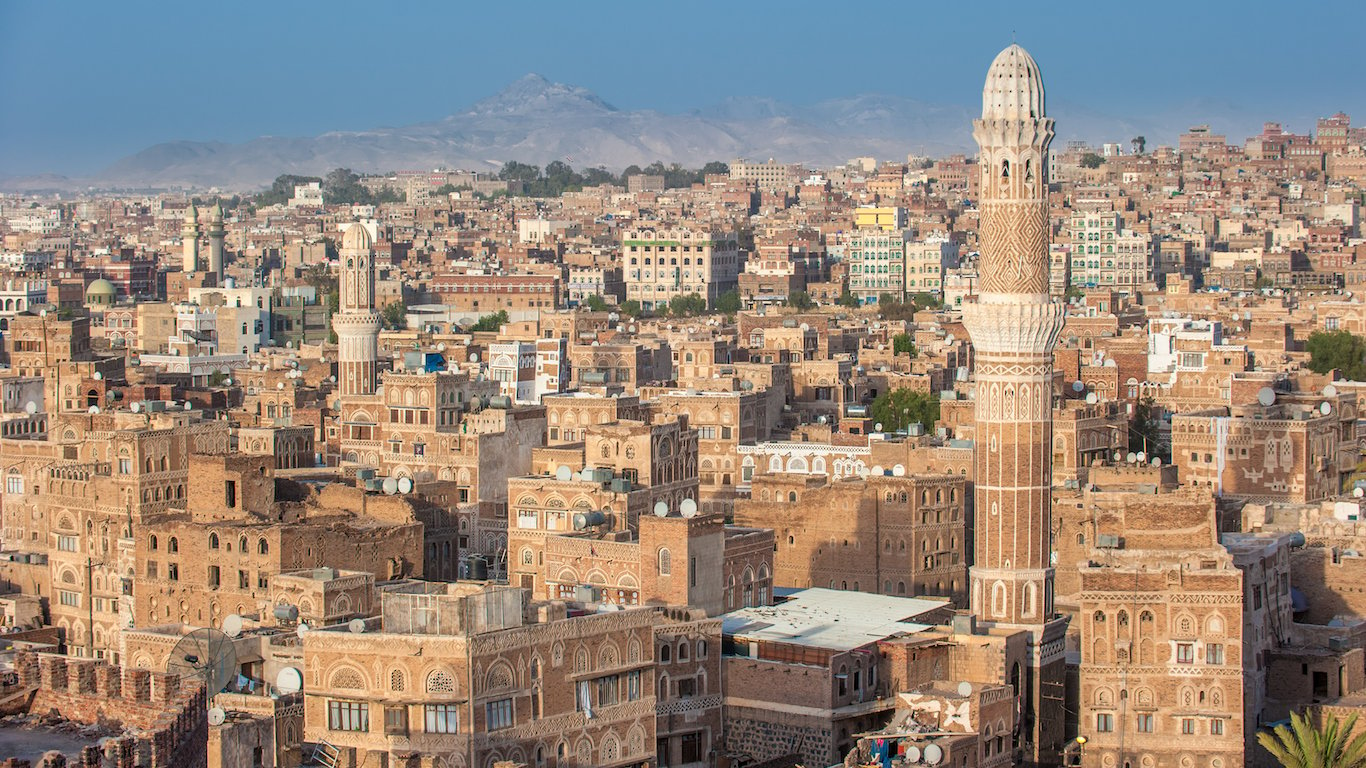
40. Yemen
> 2015 Population: 28.3 million
> 2015 GDP per capita: $1,303
Currently in the midst of a civil war, Yemen is one of the most dangerous countries in the world. The U.S. Embassy in the country was shuttered in 2015, and as a result, the State Department is largely unable to assist Americans in the country. In addition to conflicts between the government and rebel groups, multiple terrorist organizations, including al-Qaida, have operations within the country.
Are you ready for retirement? Planning for retirement can be overwhelming, that’s why it could be a good idea to speak to a fiduciary financial advisor about your goals today.
Start by taking this retirement quiz right here from SmartAsset that will match you with up to 3 financial advisors that serve your area and beyond in 5 minutes. Smart Asset is now matching over 50,000 people a month.
Click here now to get started.
Thank you for reading! Have some feedback for us?
Contact the 24/7 Wall St. editorial team.